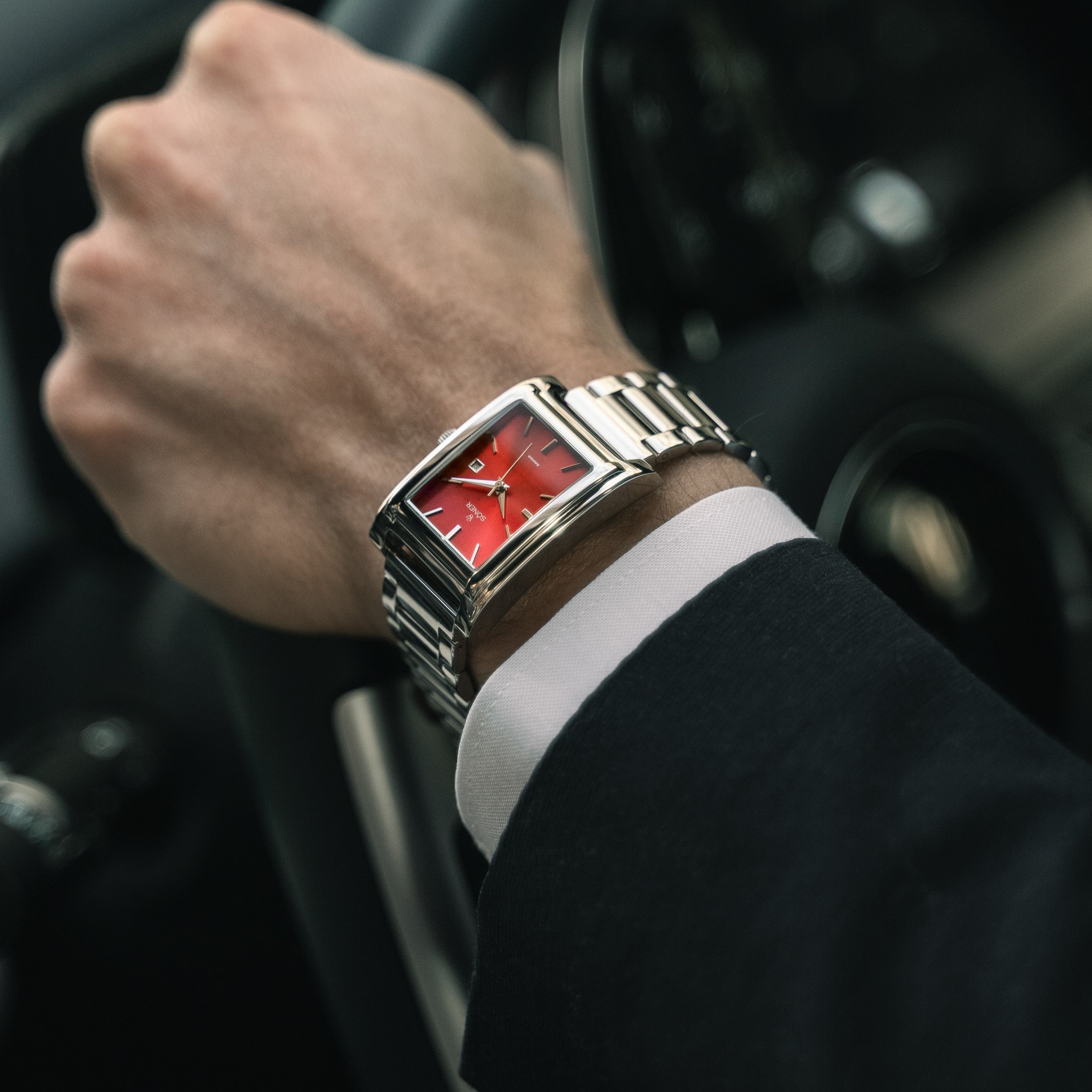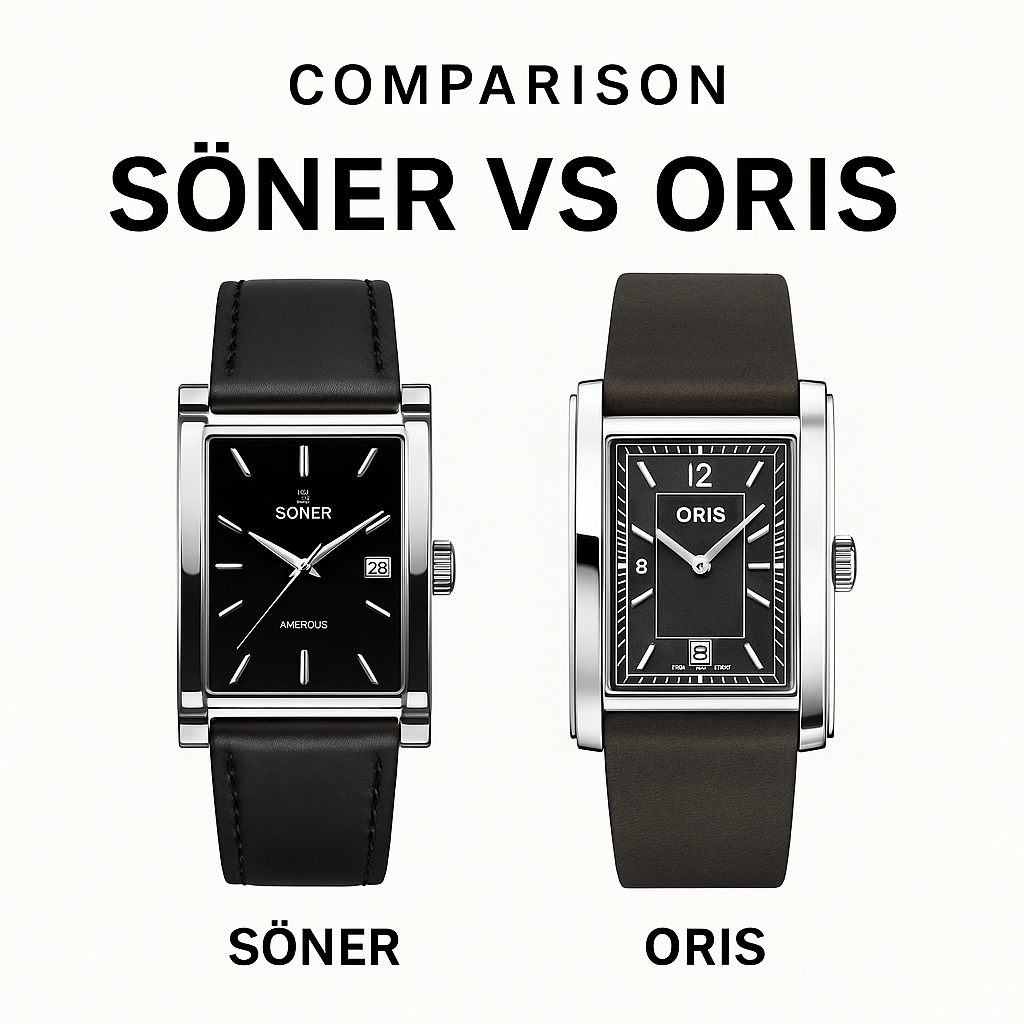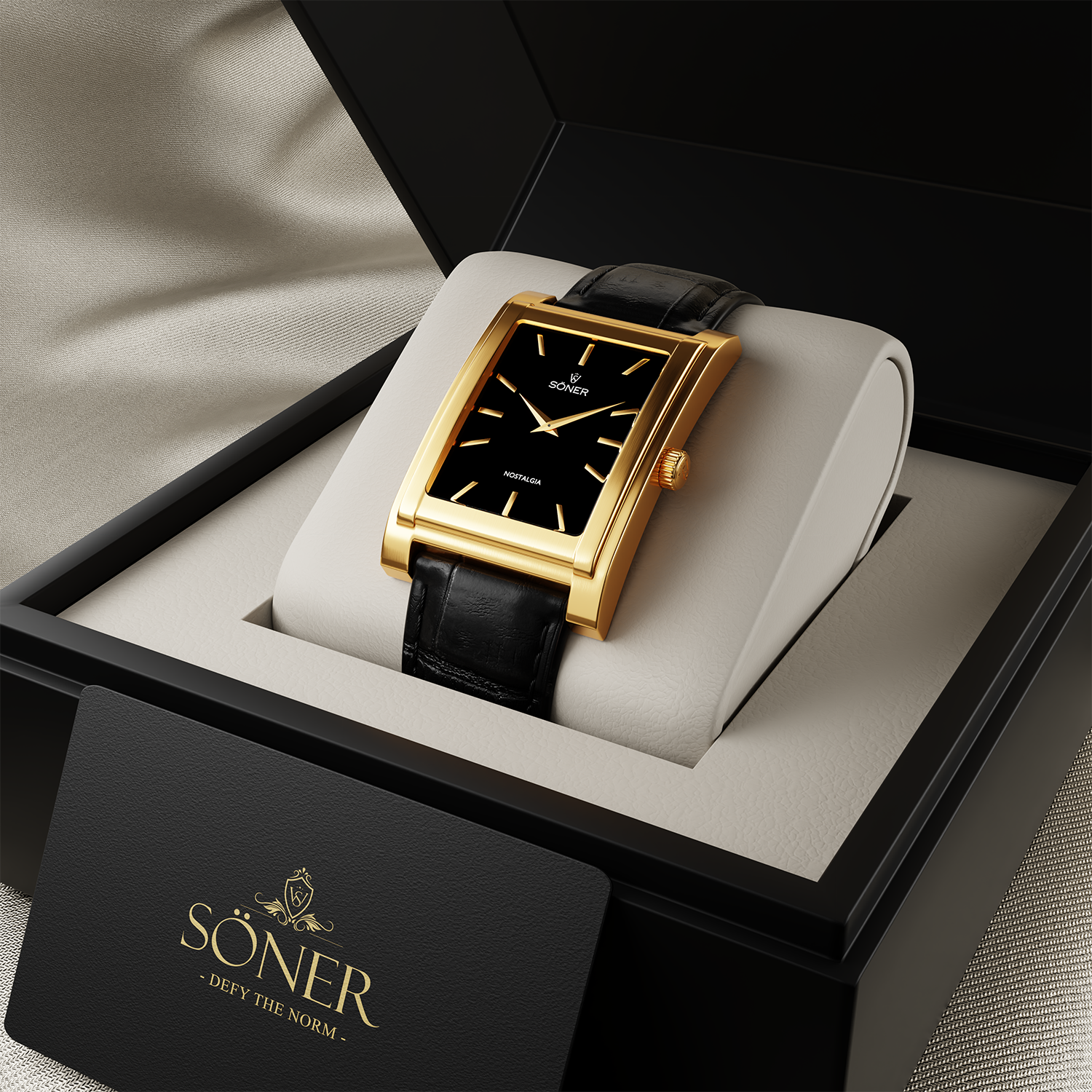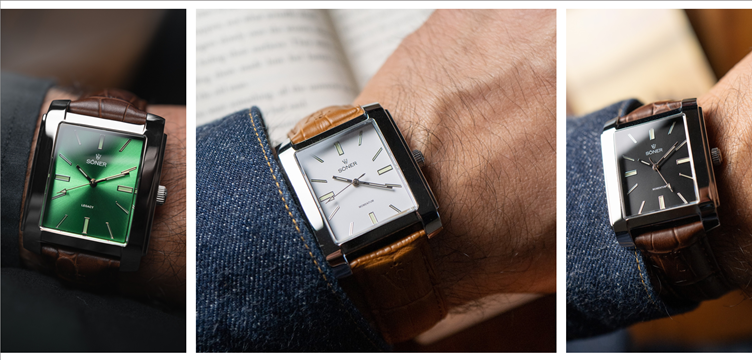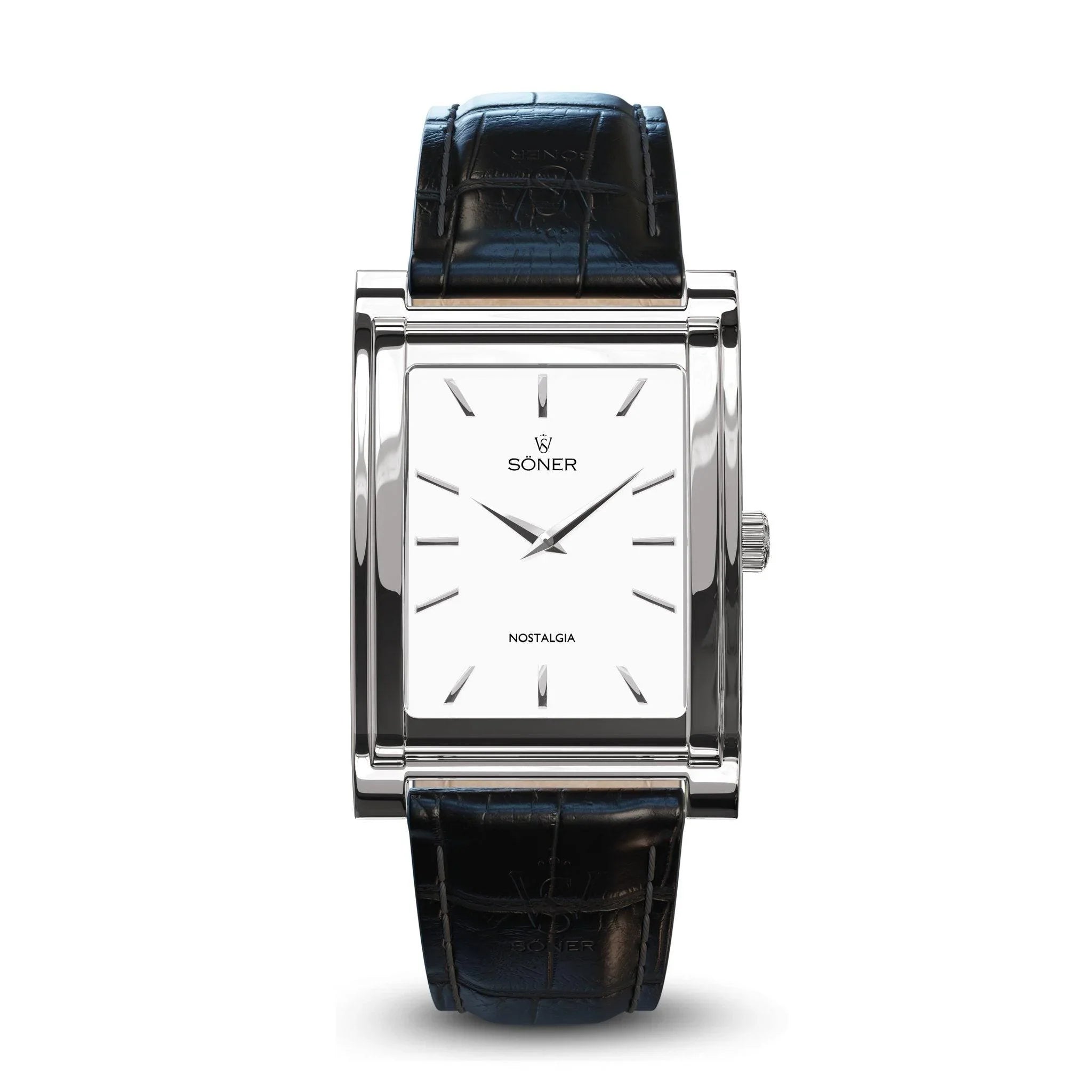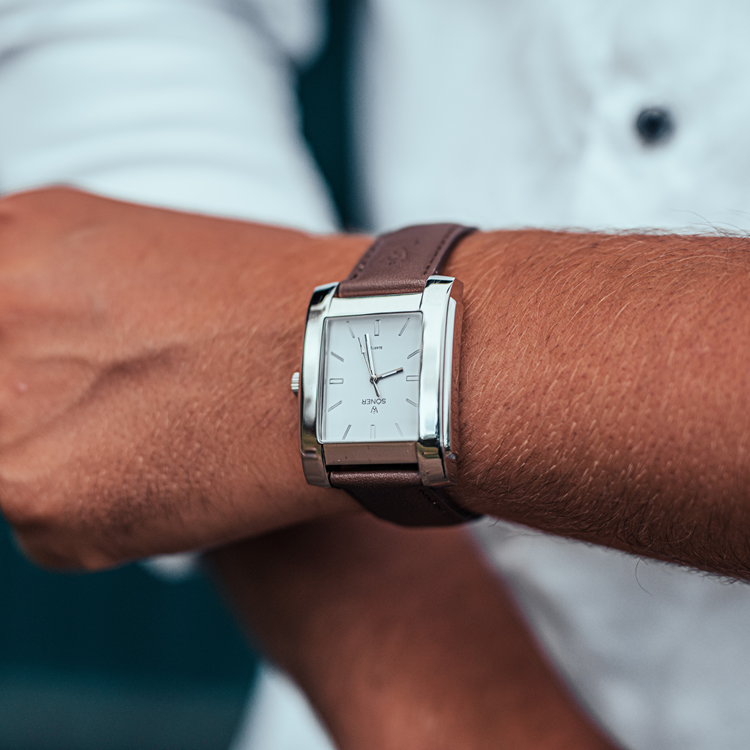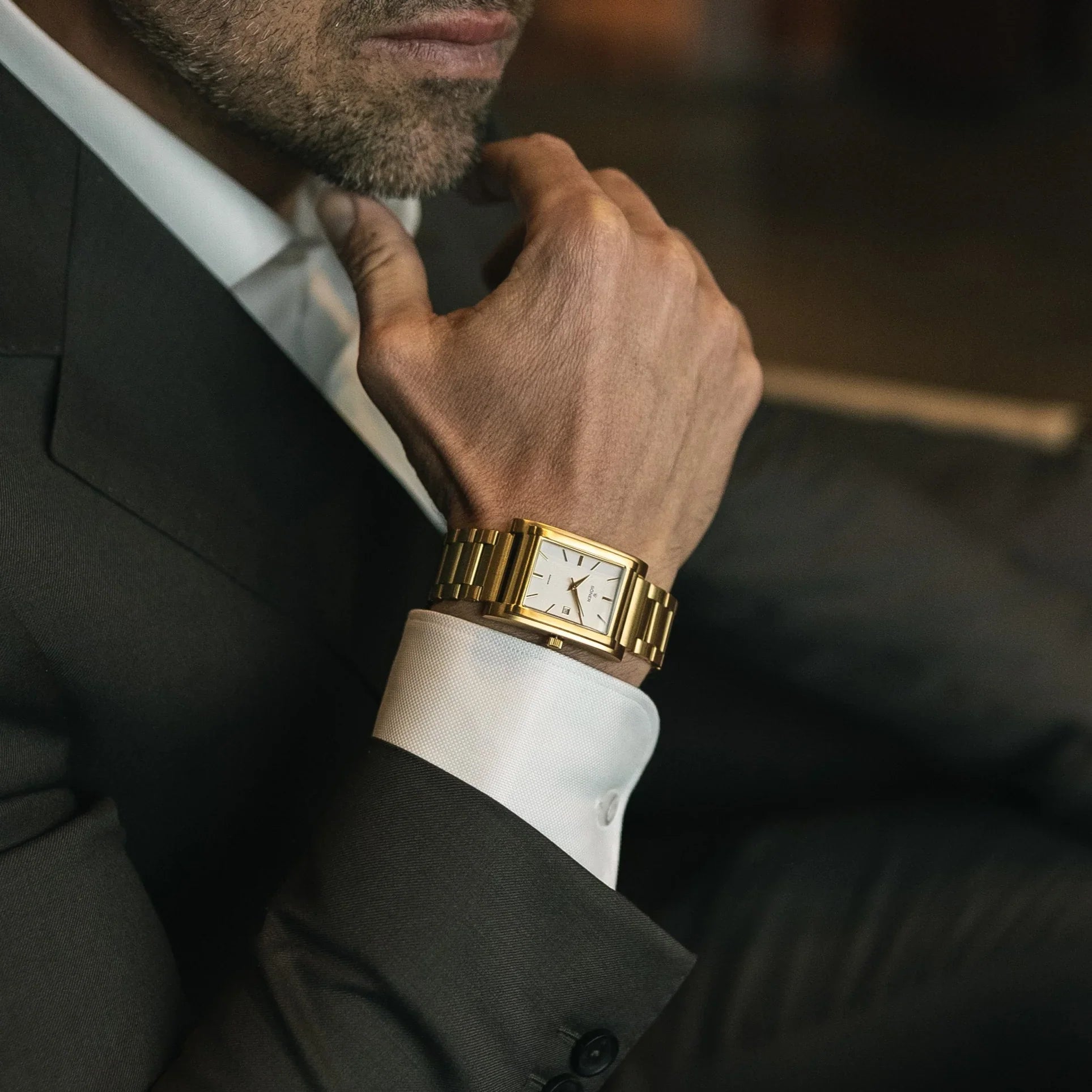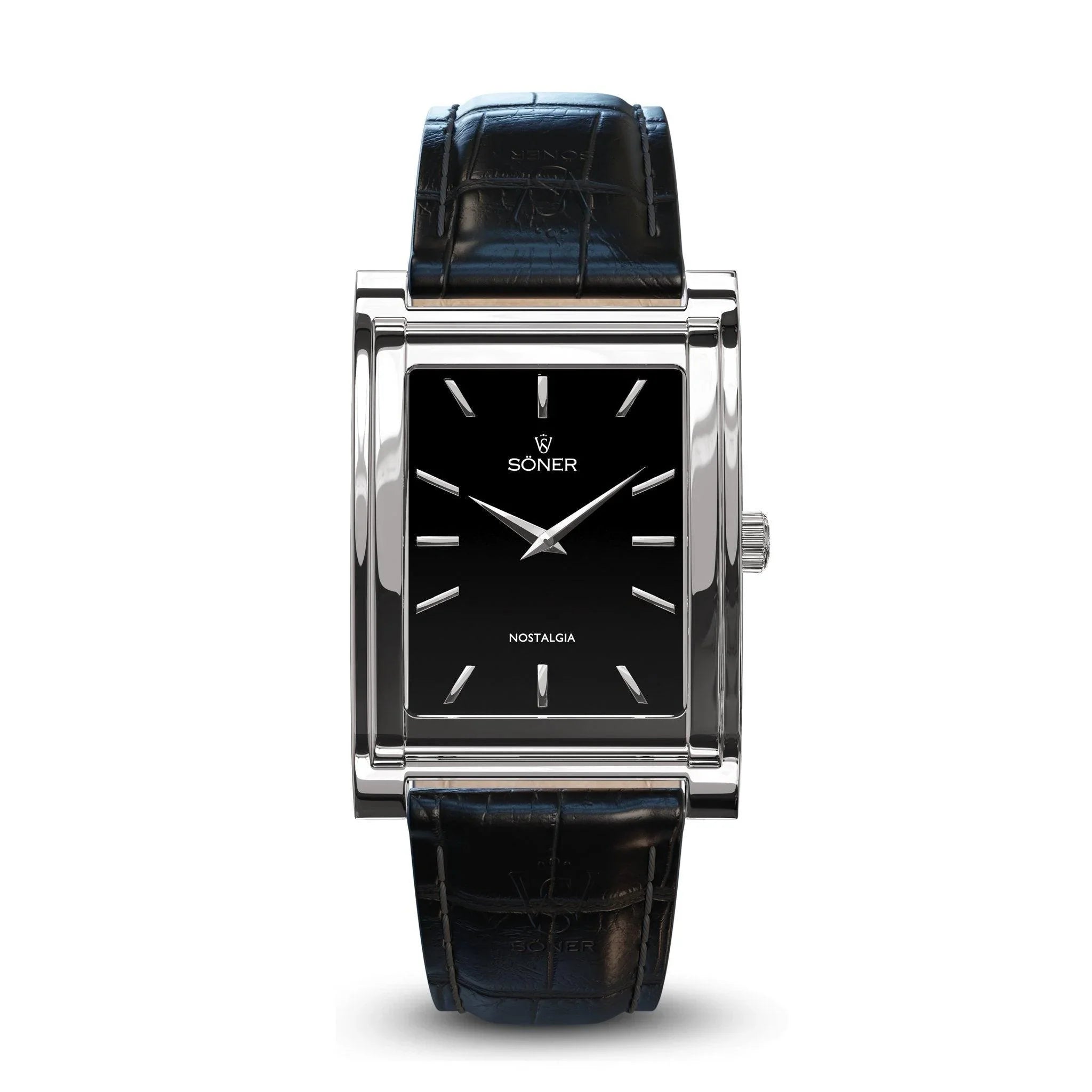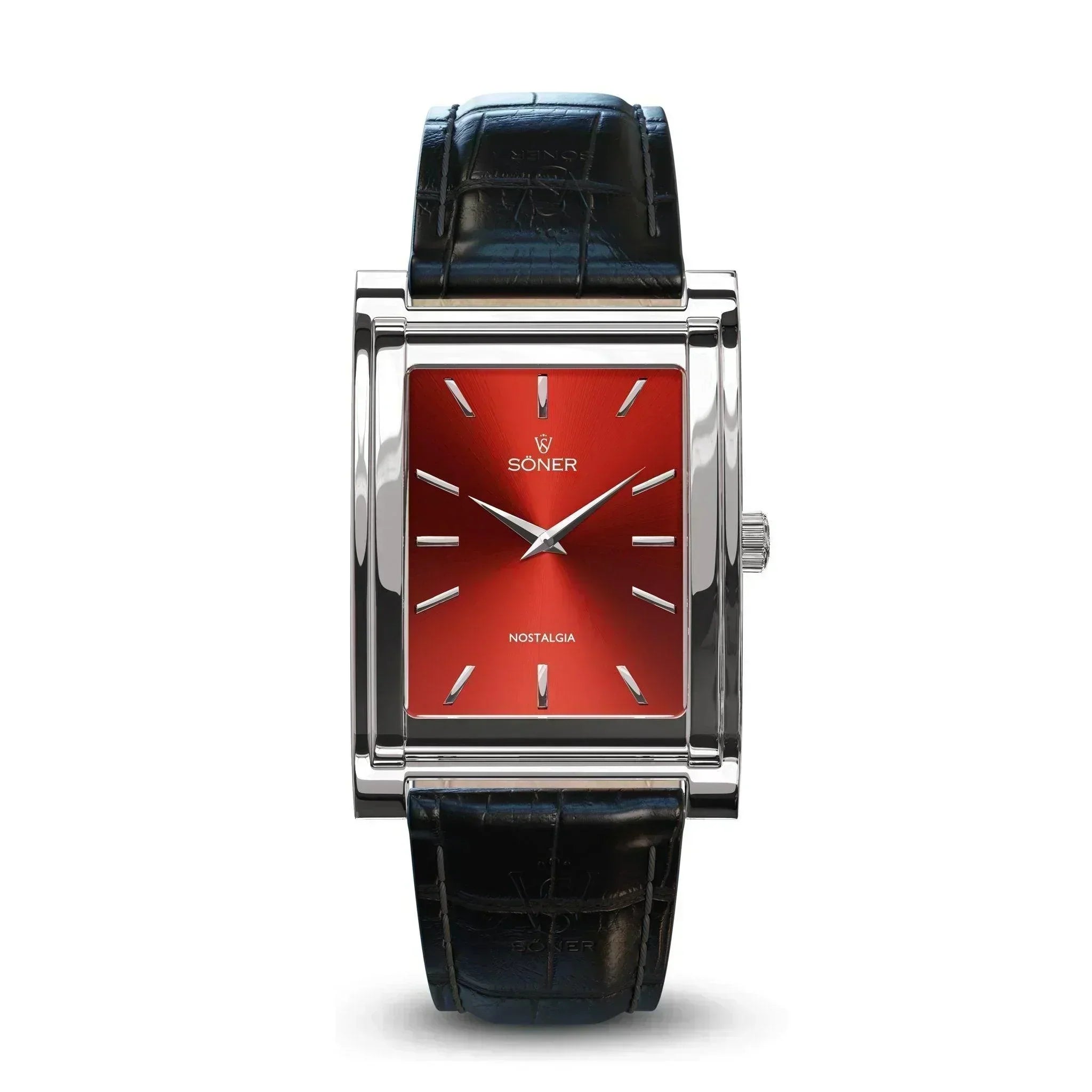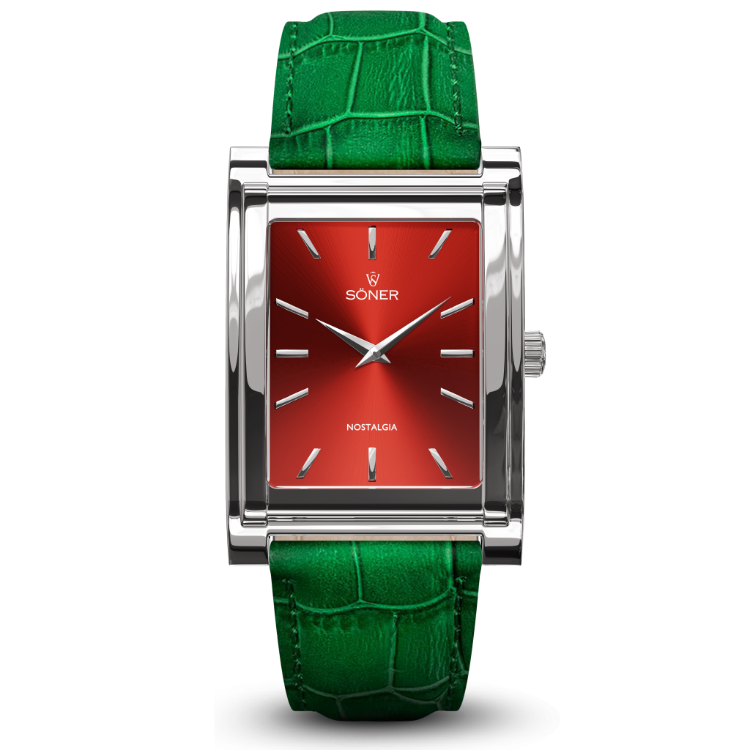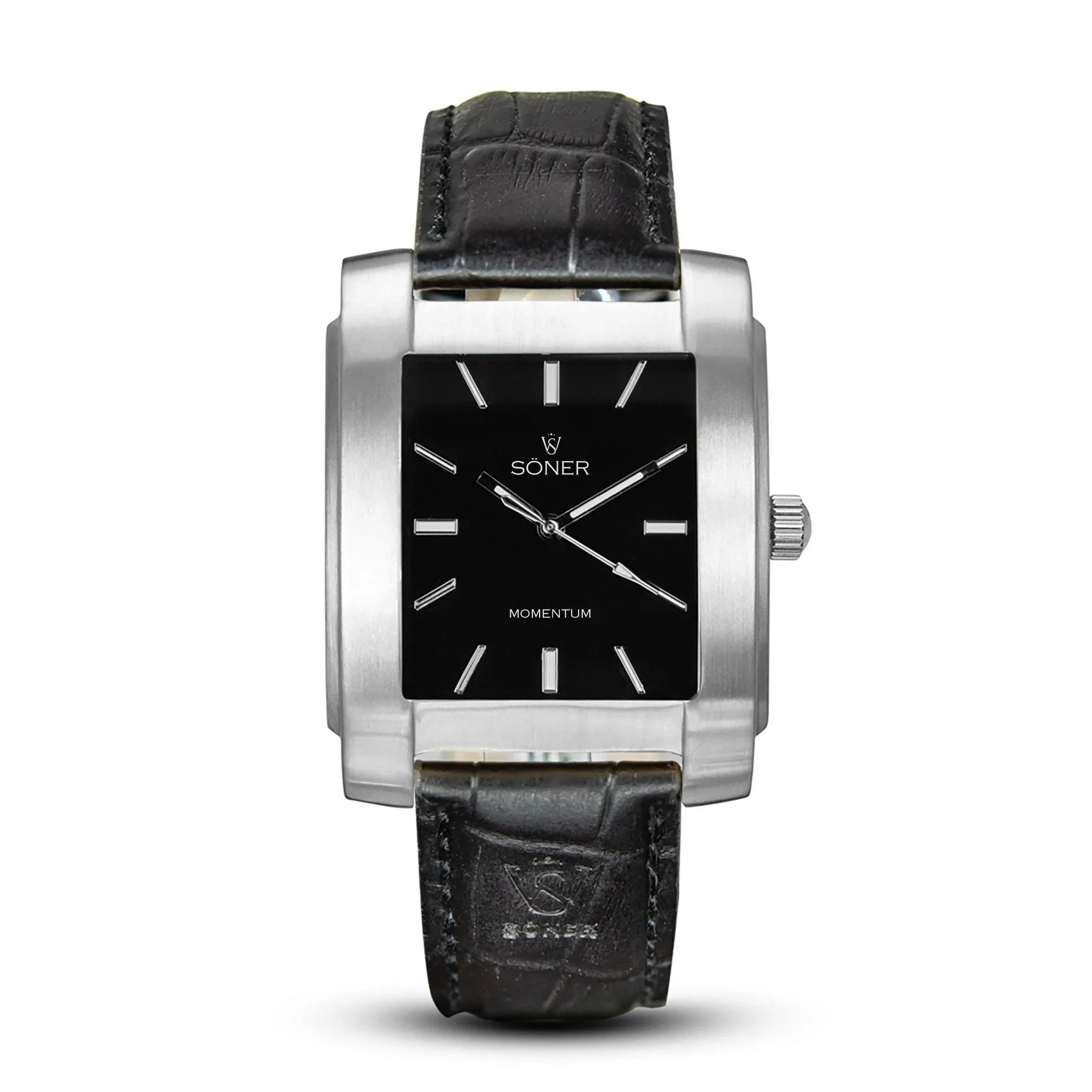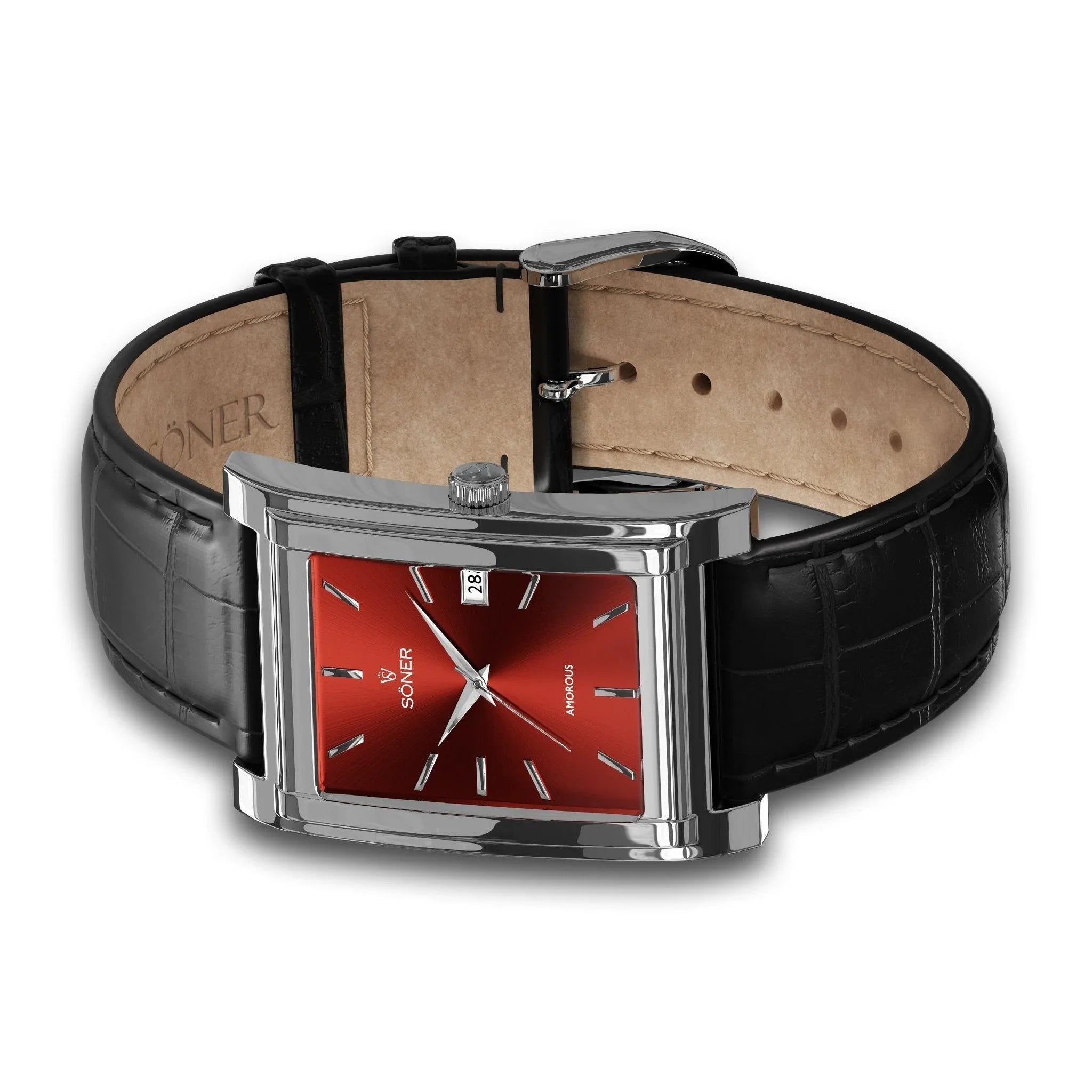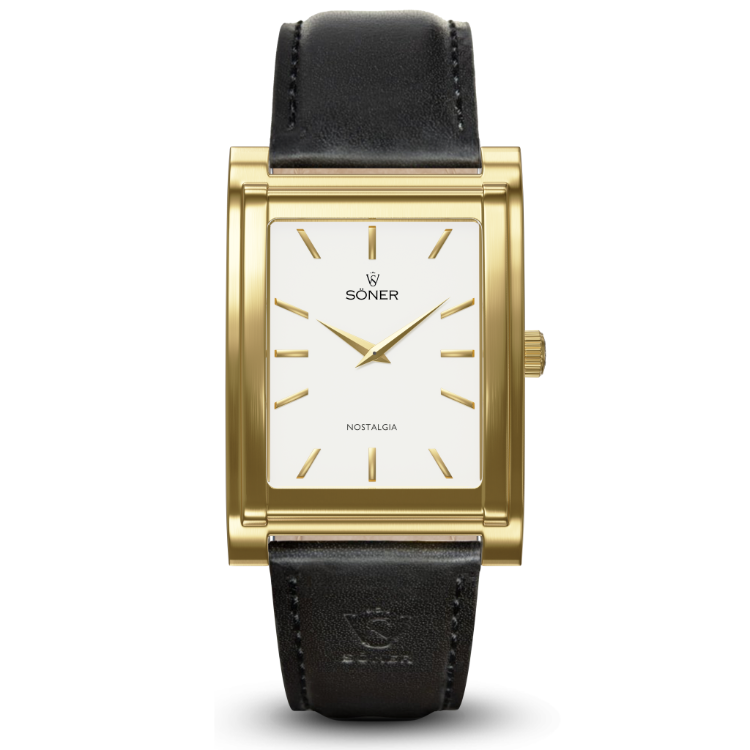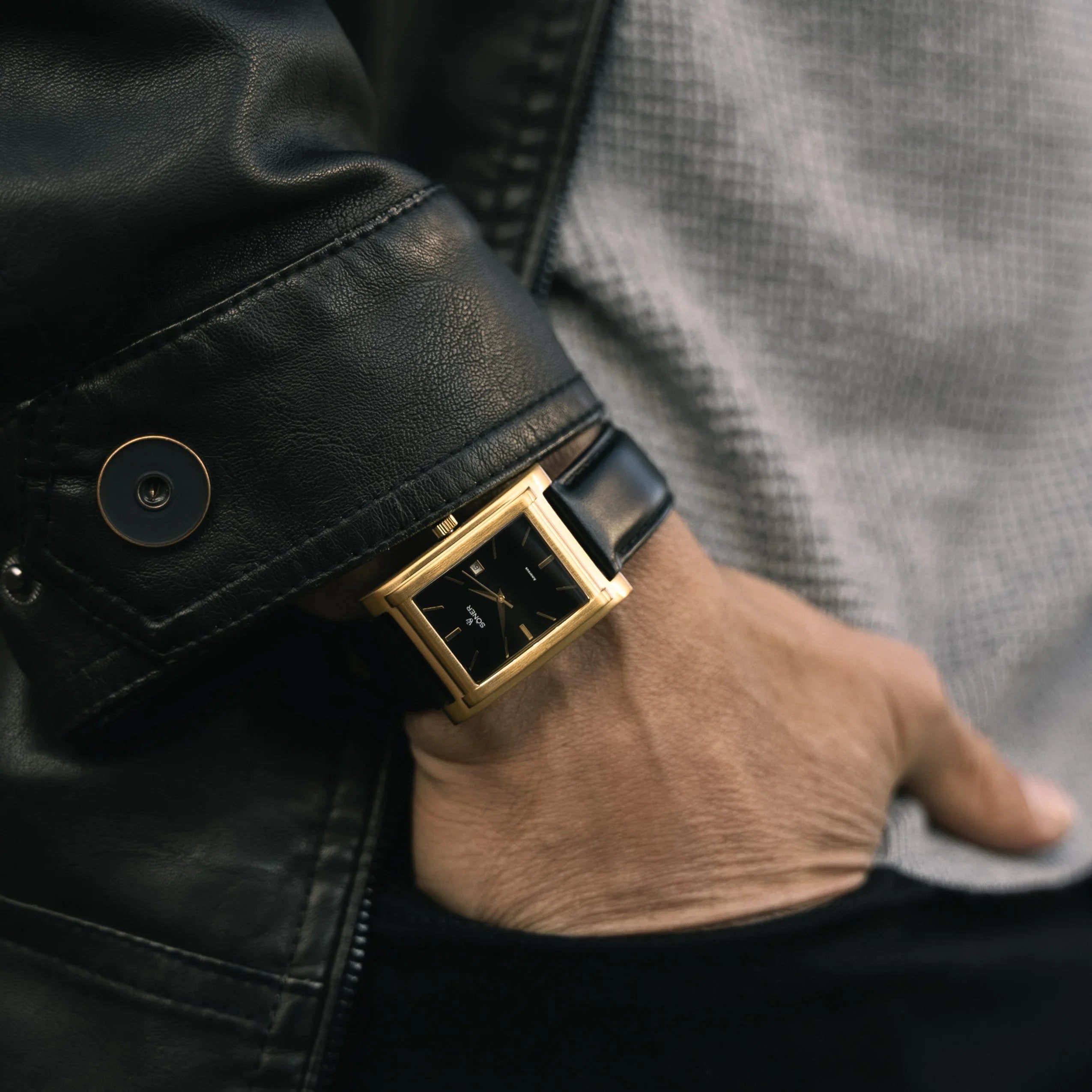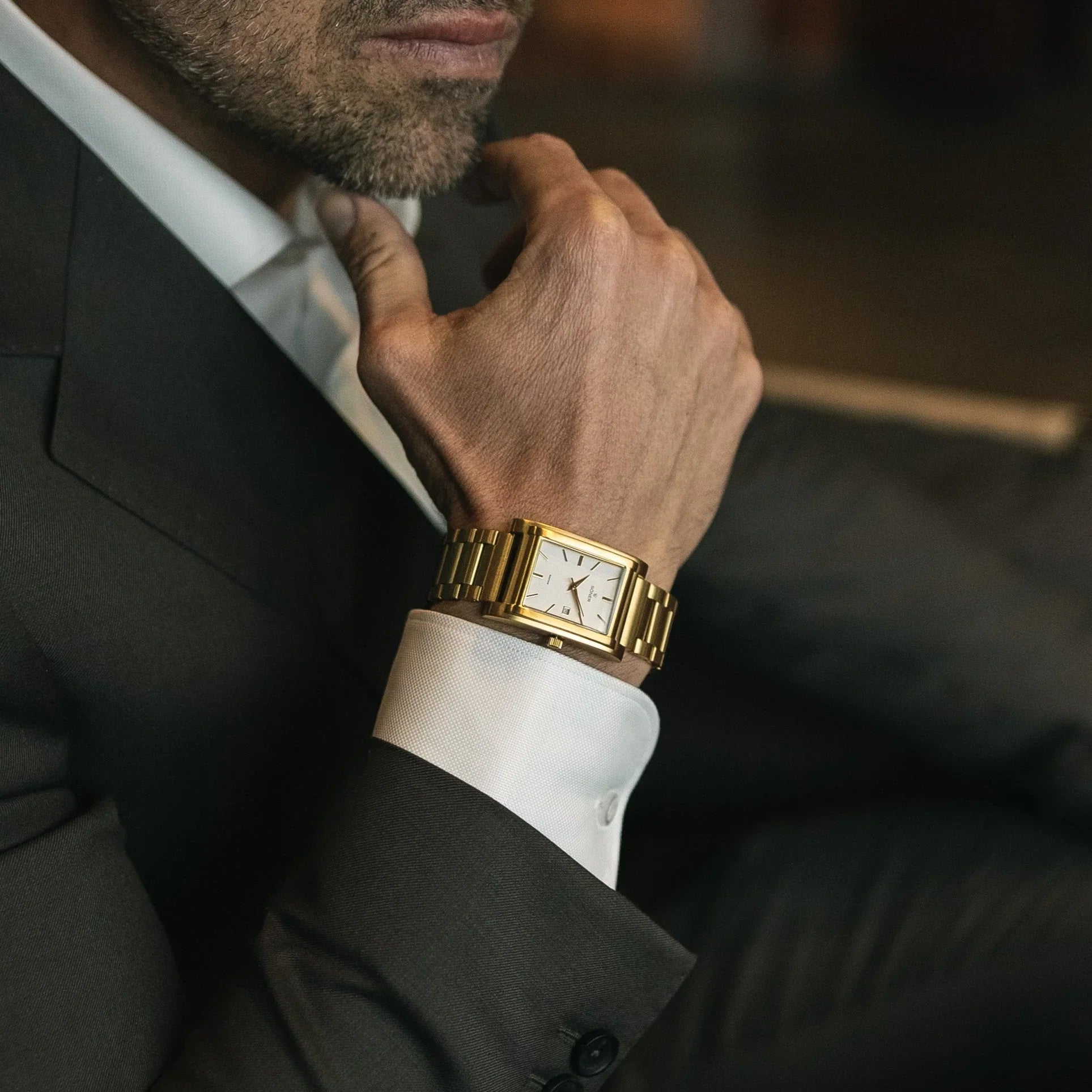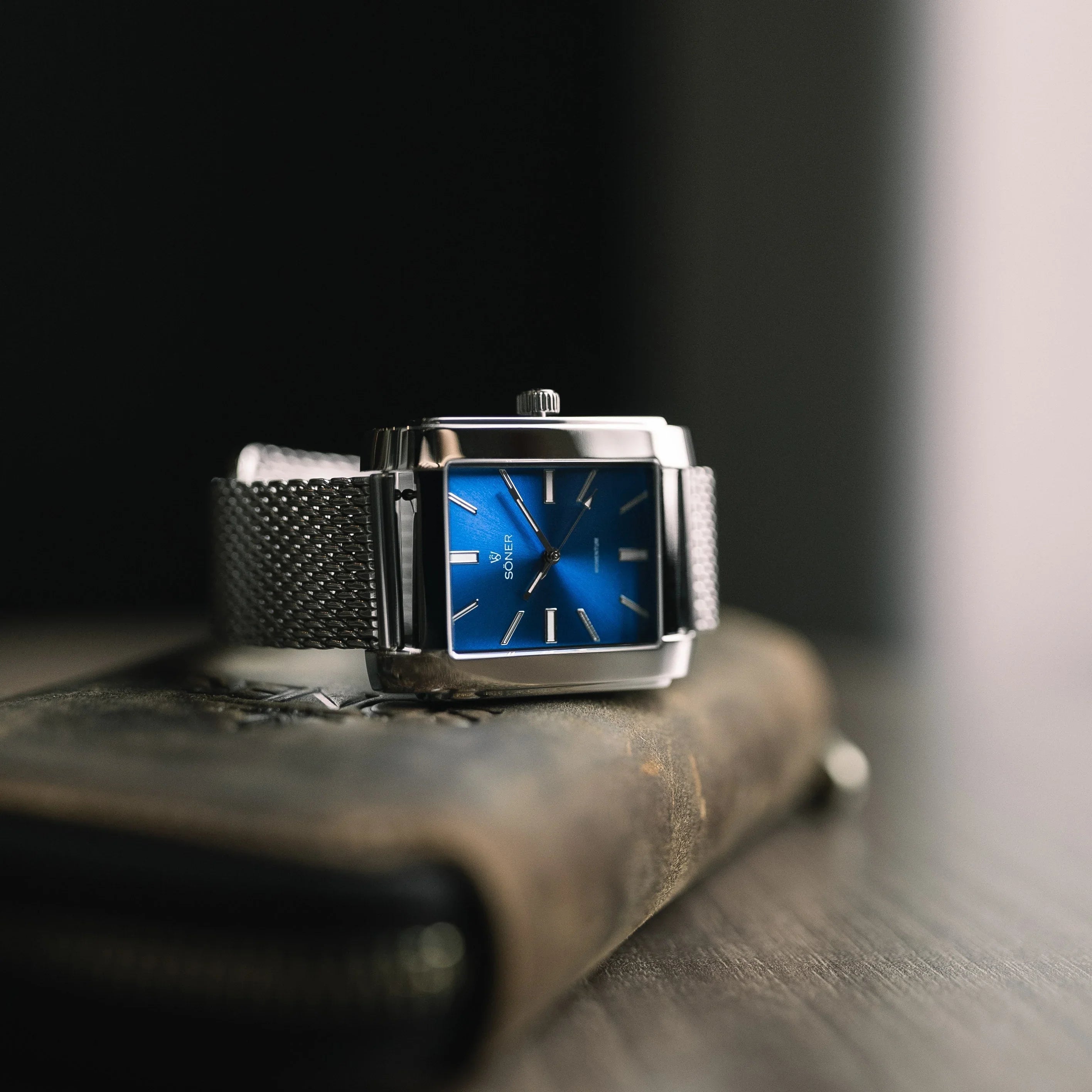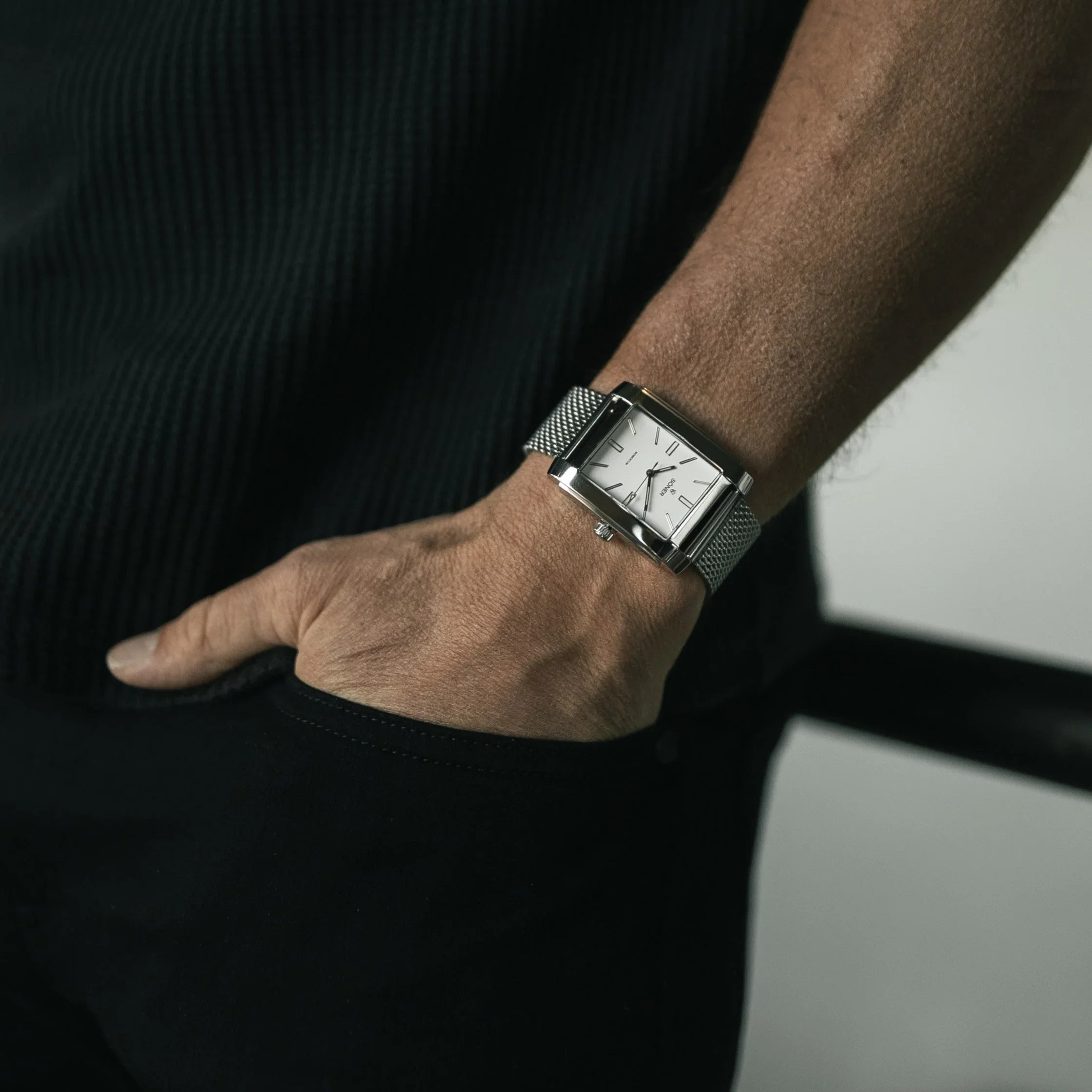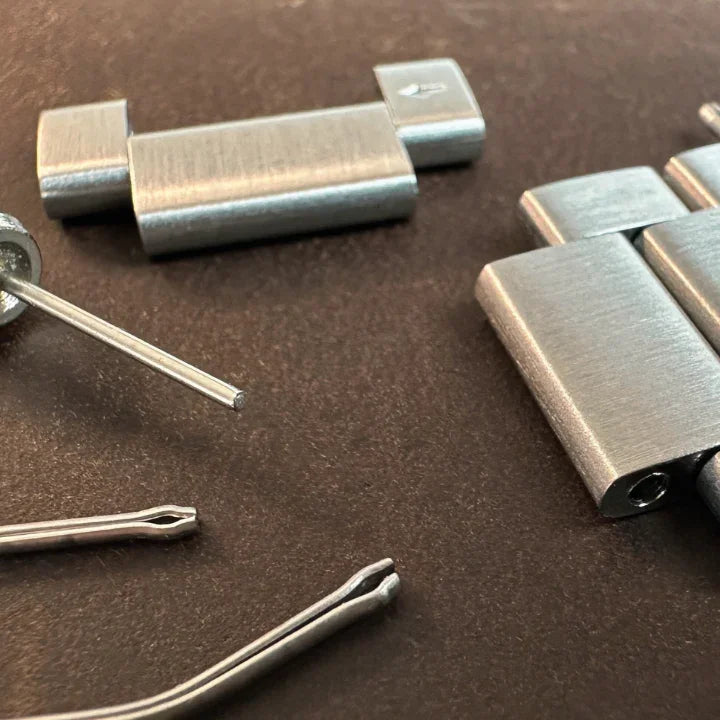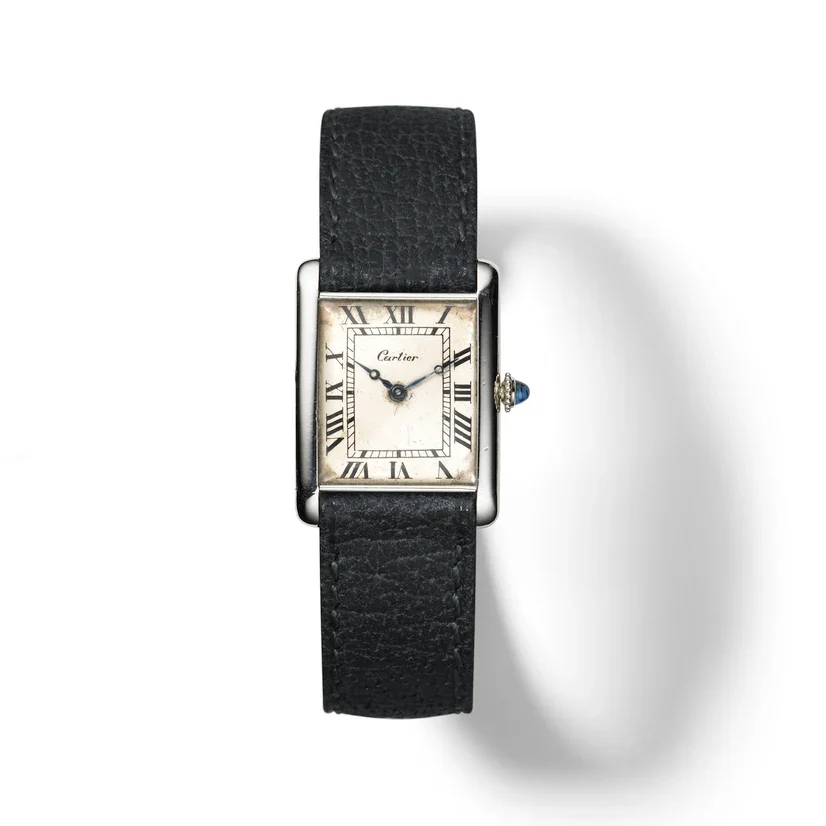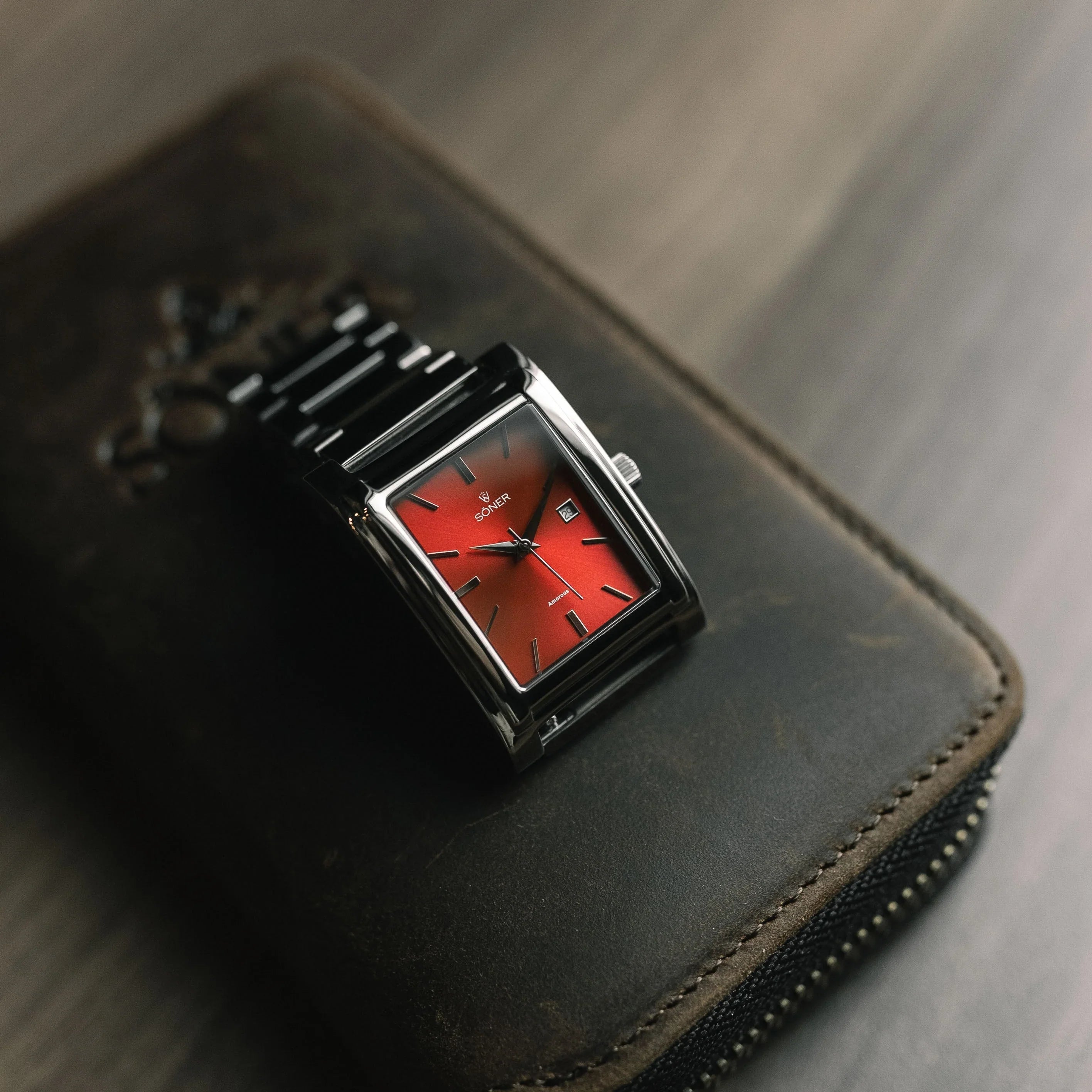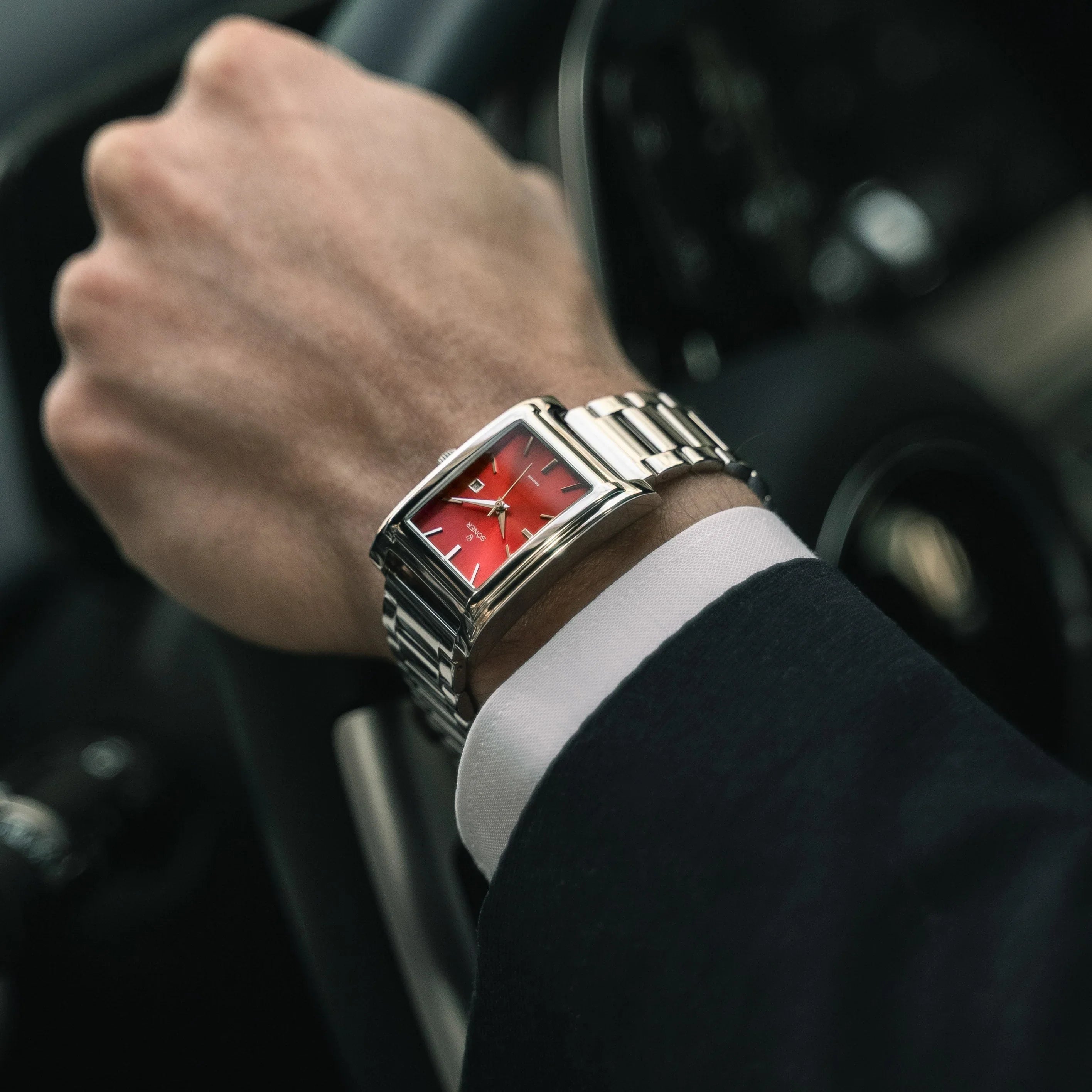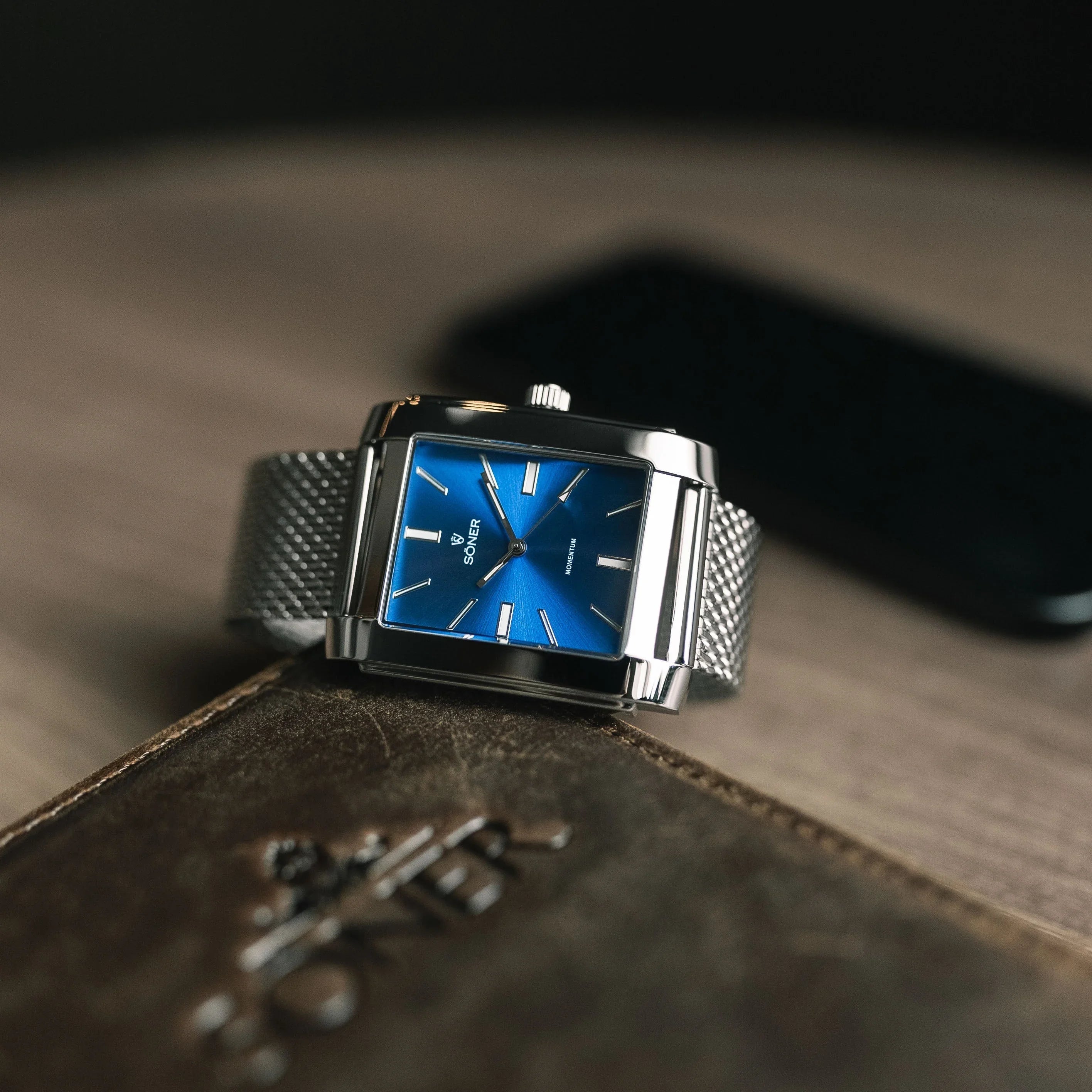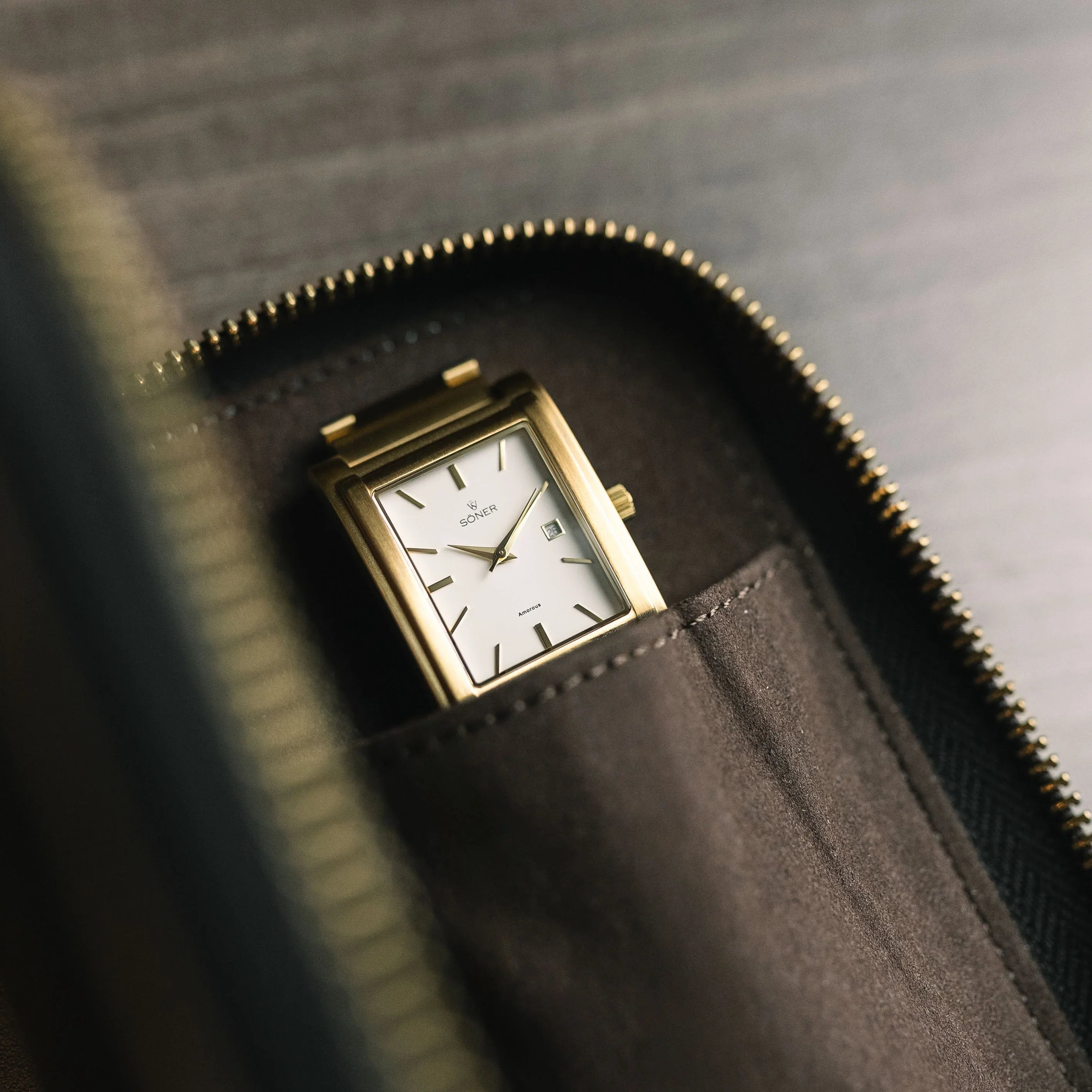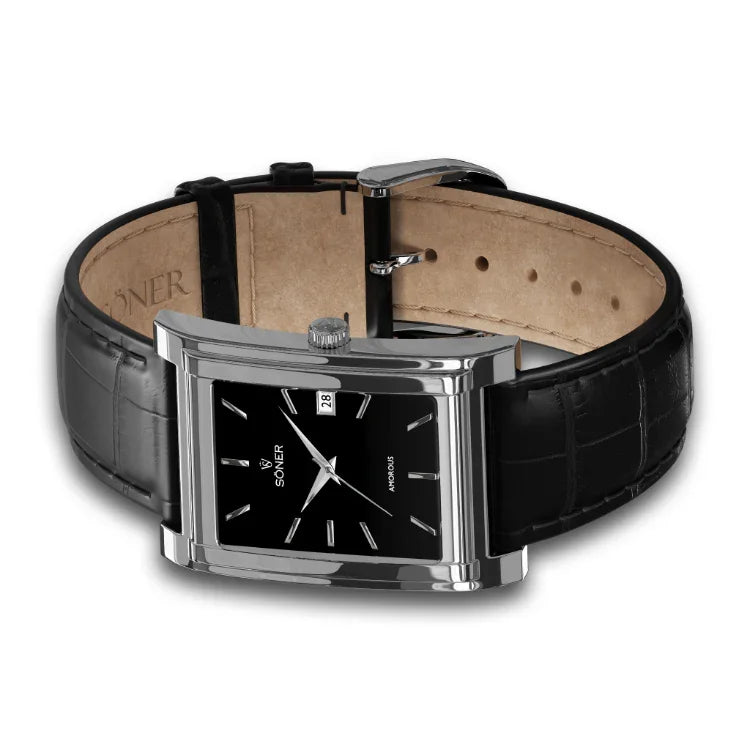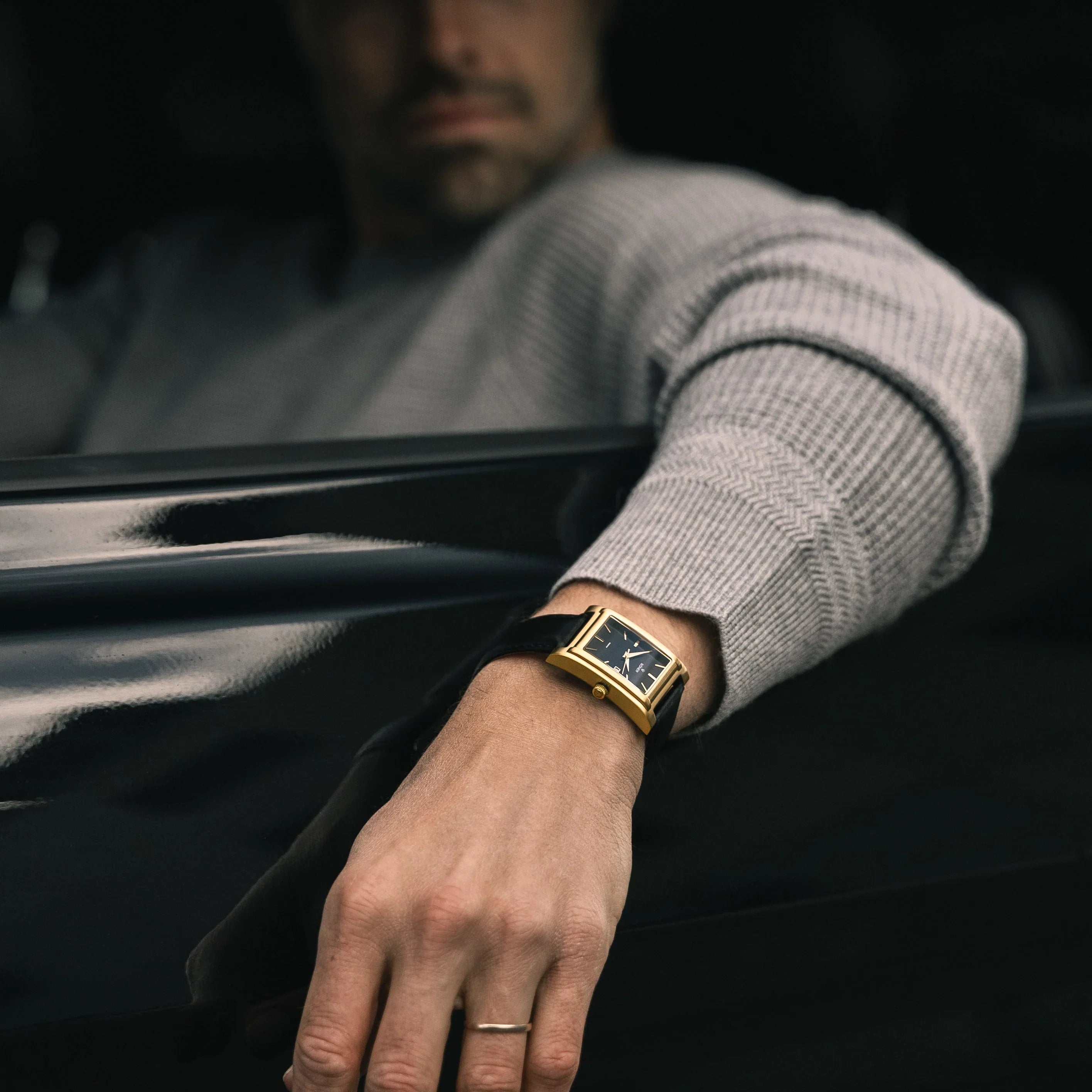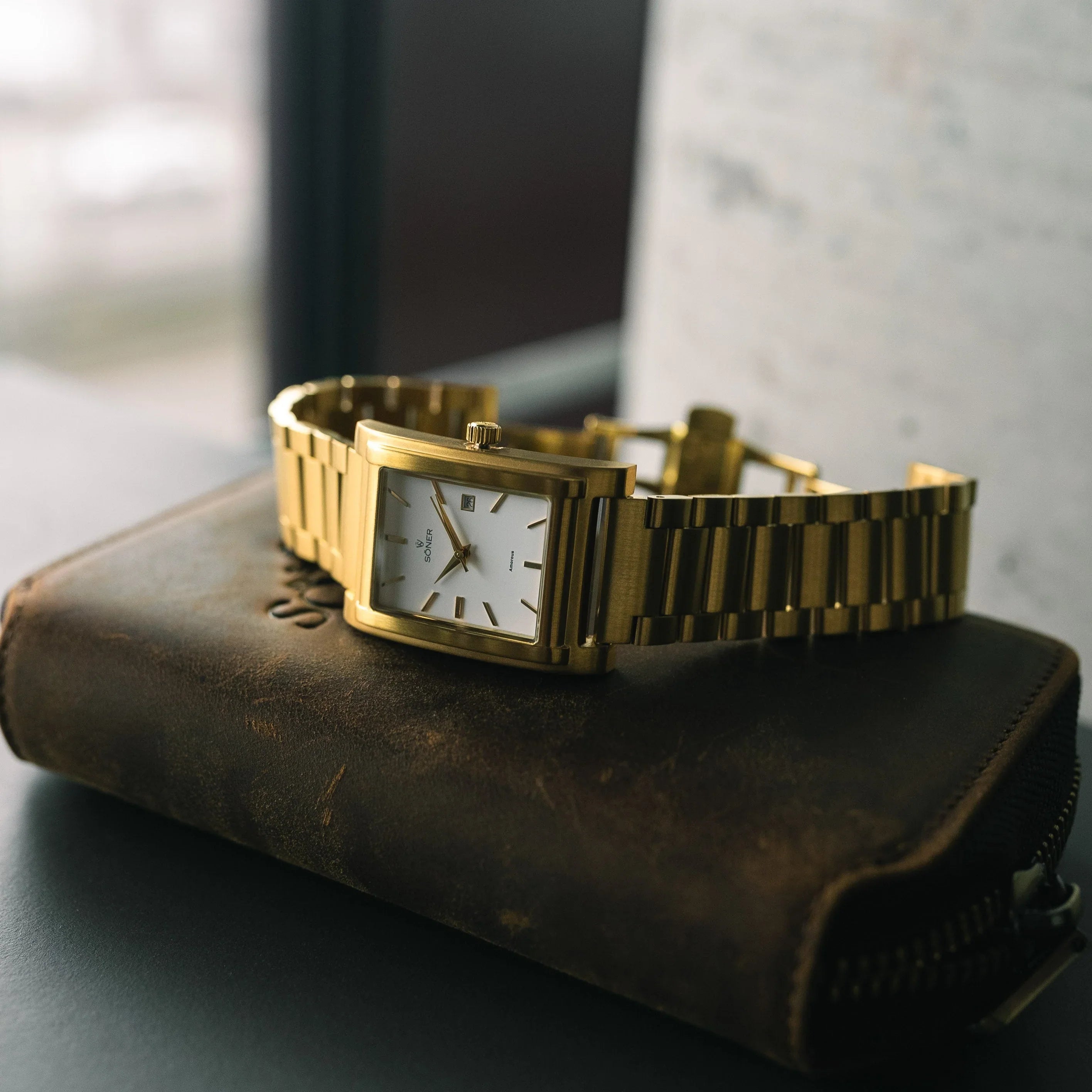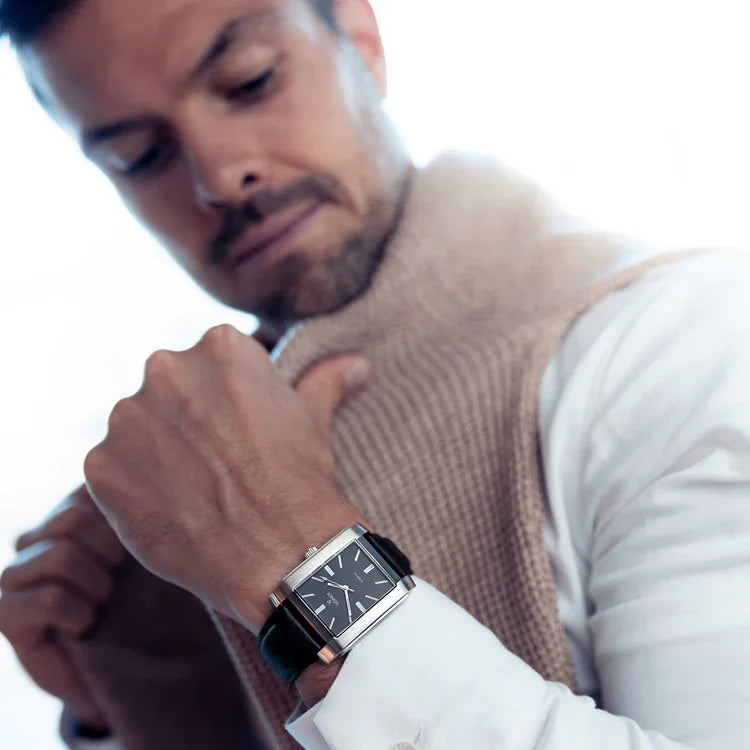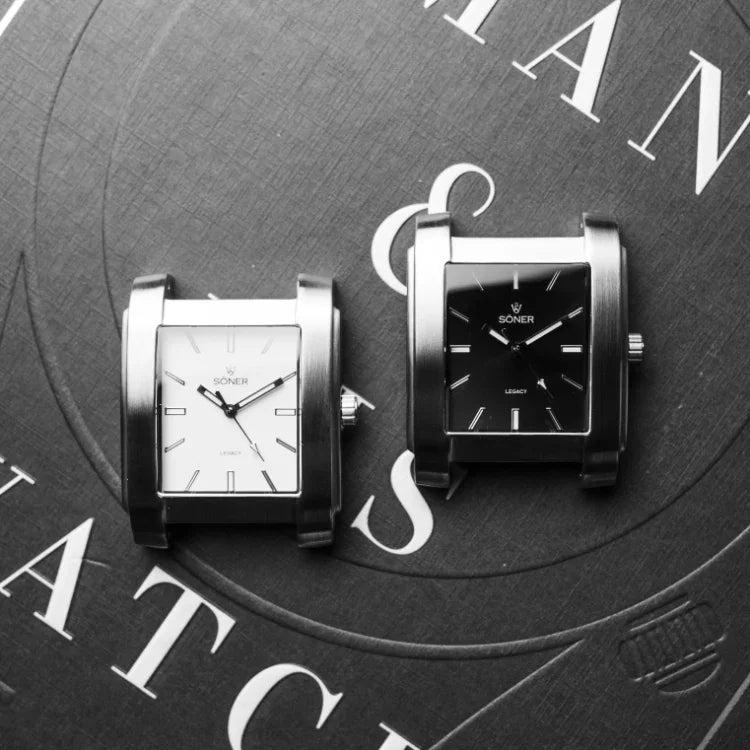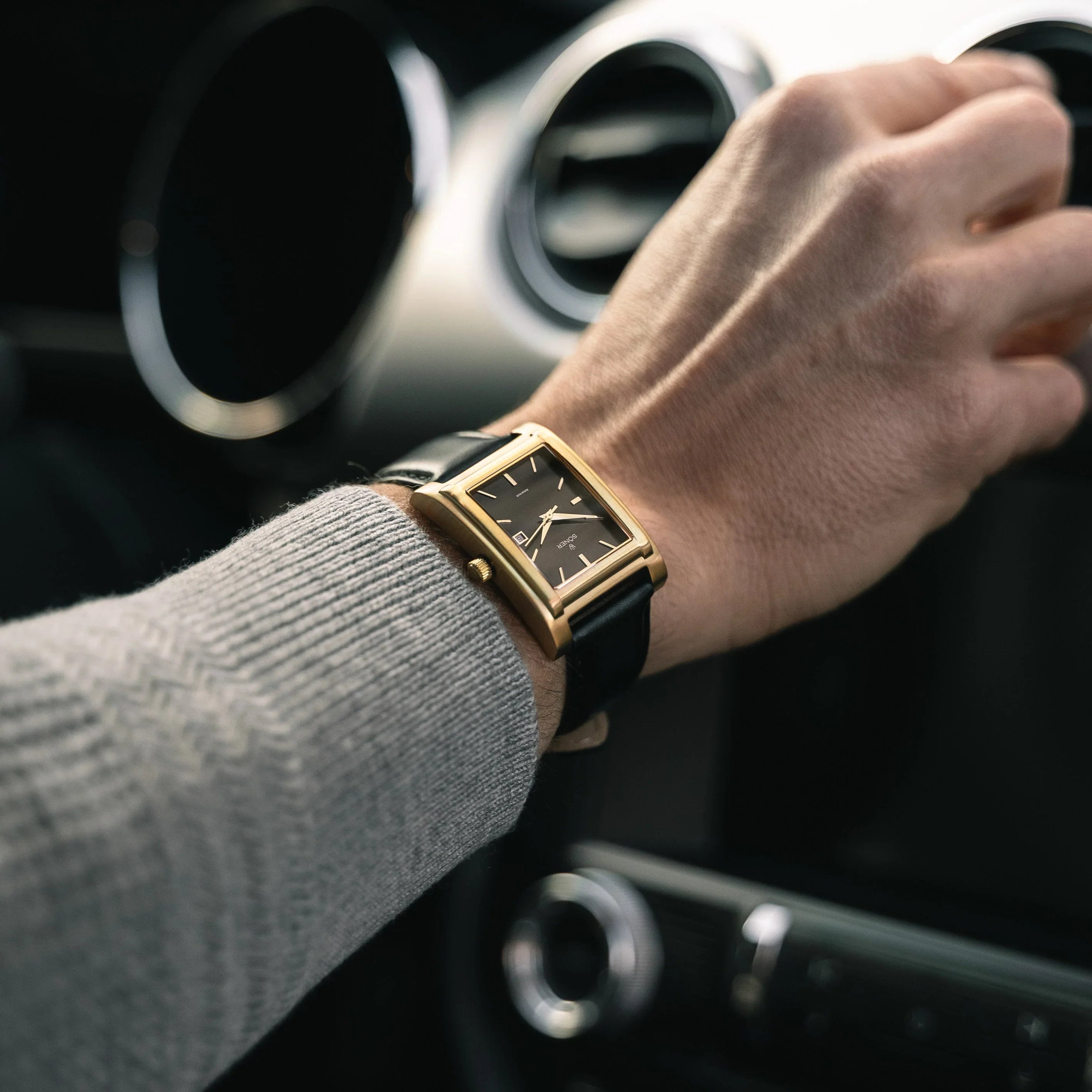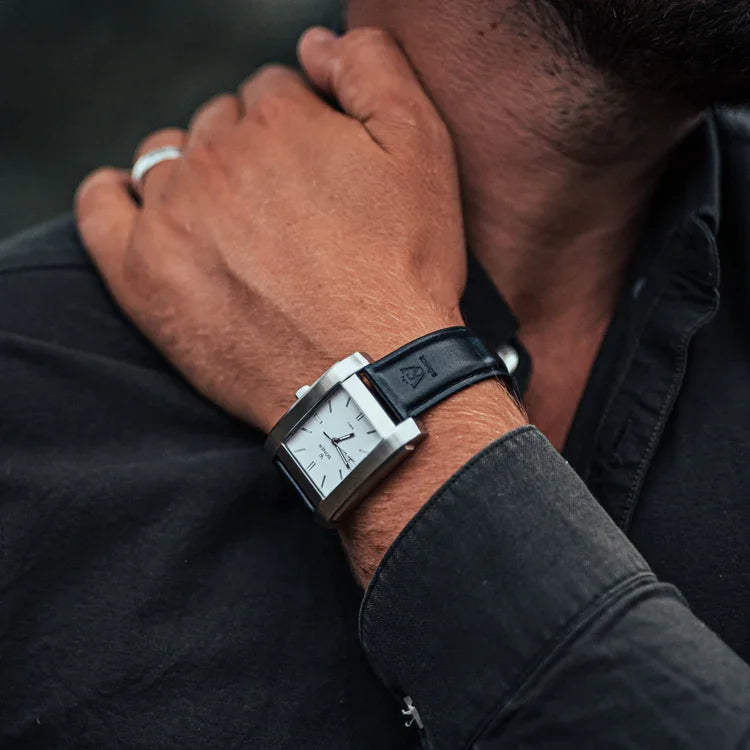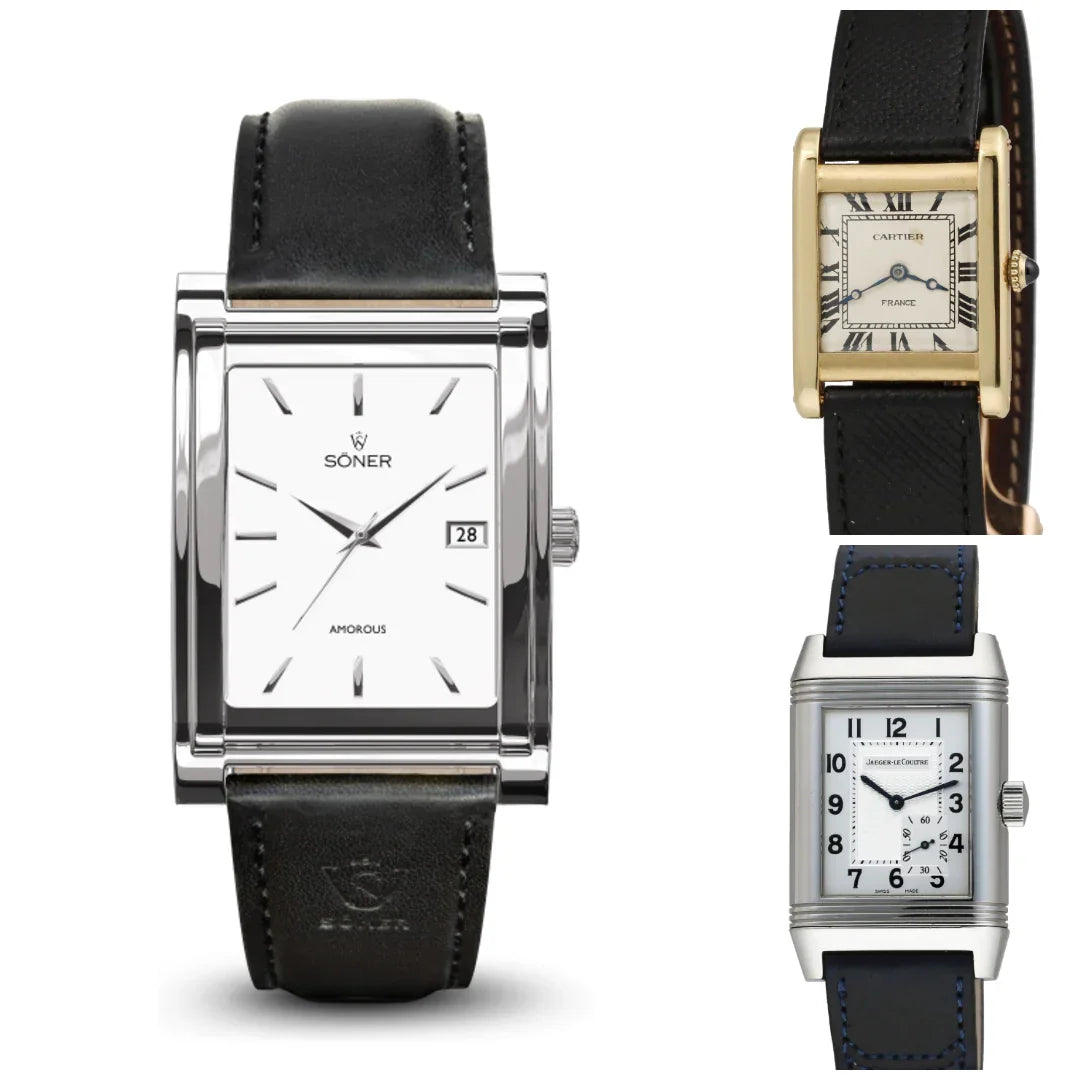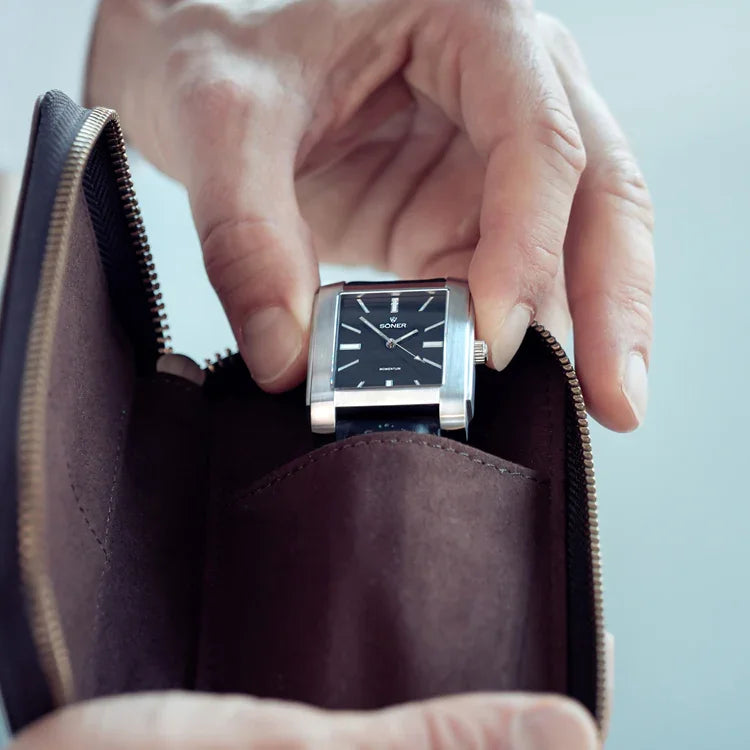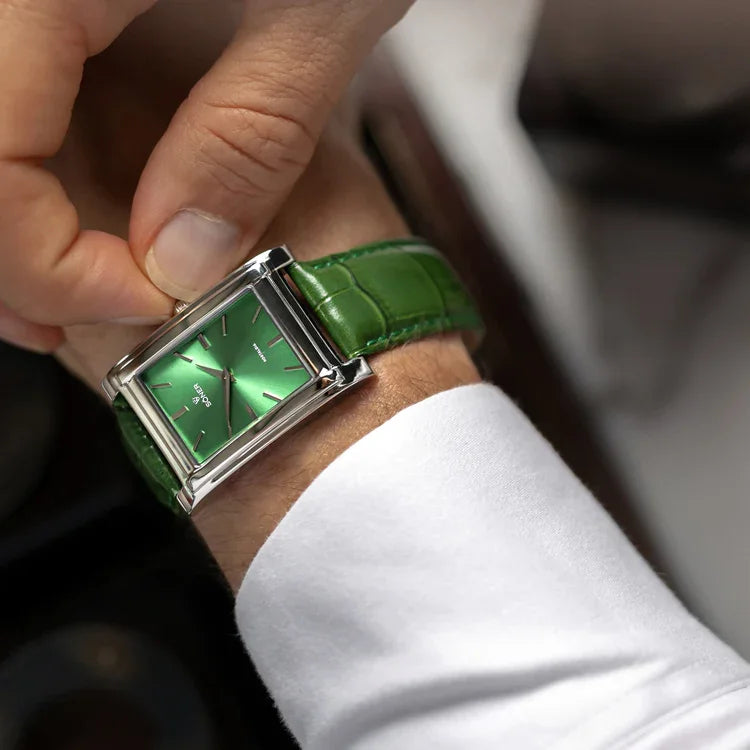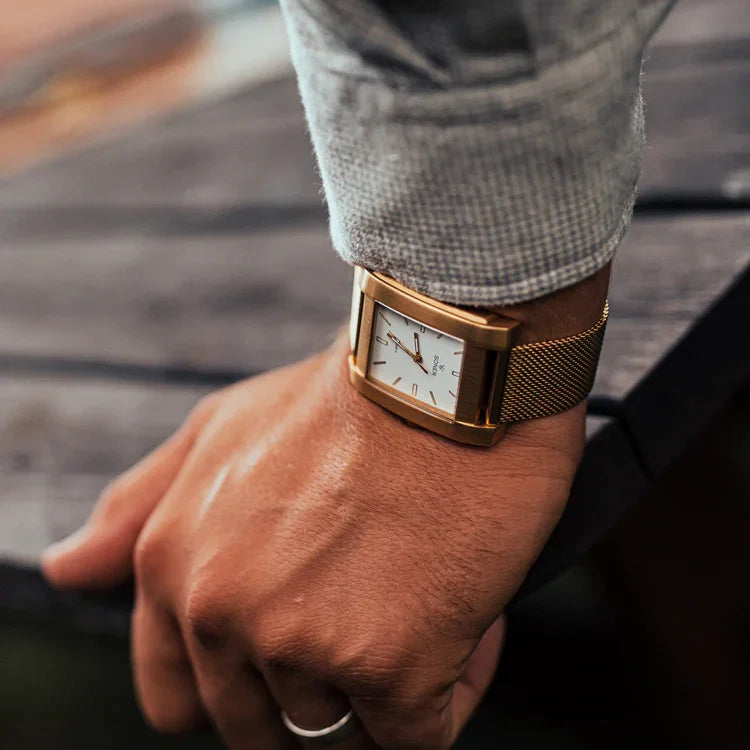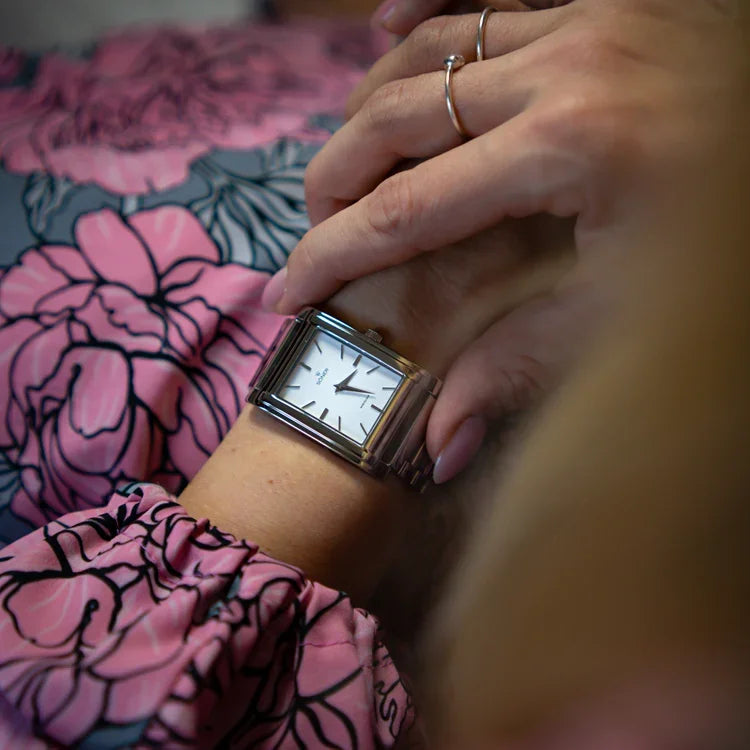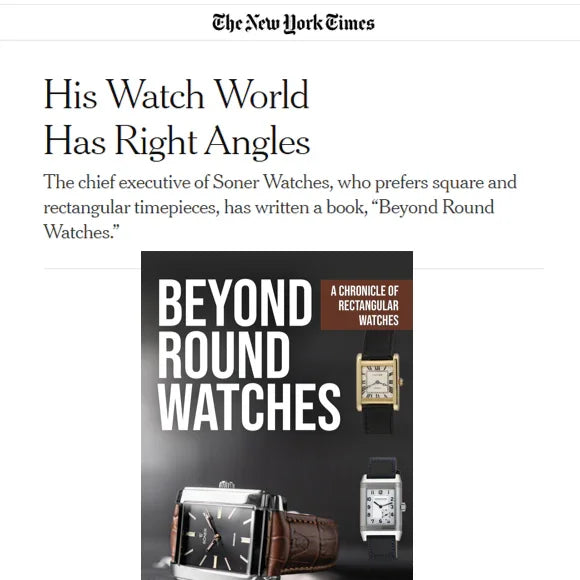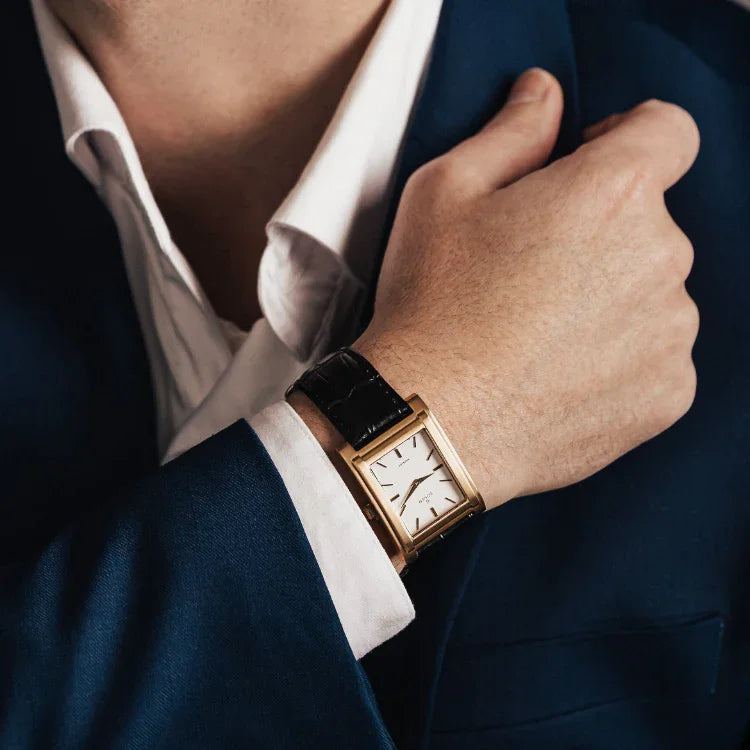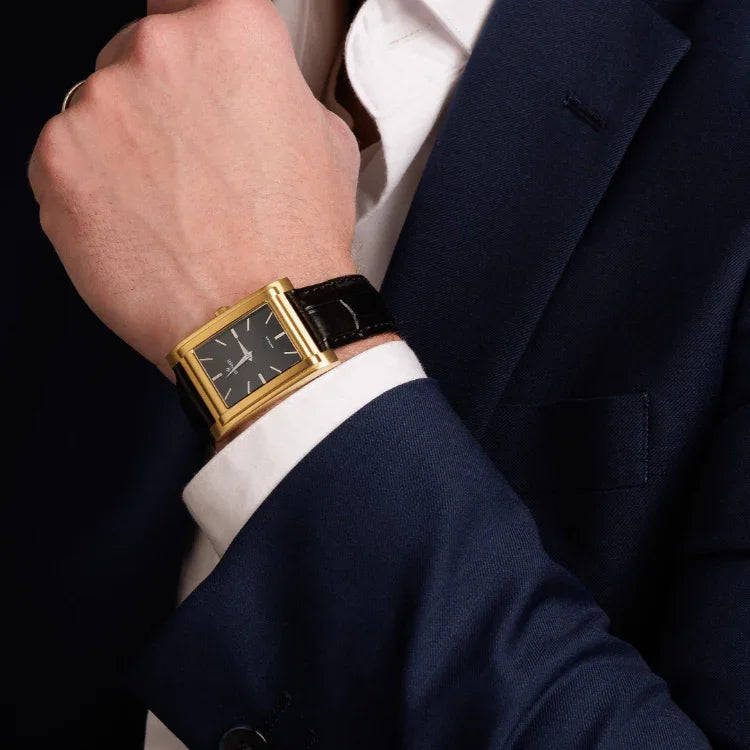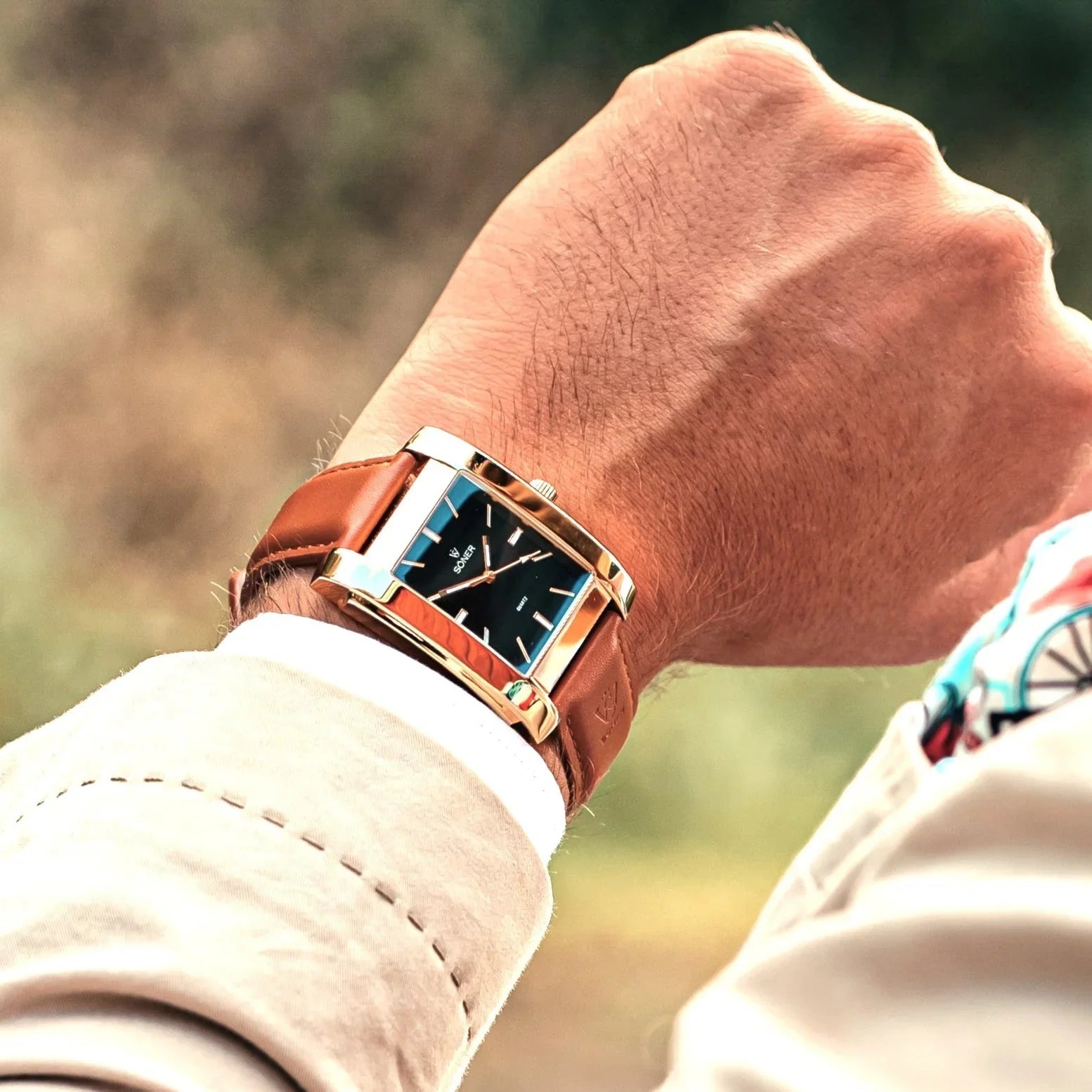¿Qué tan apretado debe estar un reloj?
Si nos preguntamos qué tan apretado debe estar un reloj, se complica. Si caben dos dedos, está demasiado suelto, pero si no cabe ningún dedo, entonces está demasiado apretado. Podríamos equivocarnos si no tenemos cuidado. Elegir el ajuste incorrecto del reloj podría afectar nuestro sentido de la moda e incluso nuestra salud. Usar un reloj demasiado suelto podría hacer que gire o se desplace constantemente. Por otro lado, usar un reloj demasiado apretado puede causar marcas rojas y sudoración.
Las diferencias en tipos de relojes y tamaños de muñeca pueden alterar la pregunta de qué tan apretado debe estar un reloj. Los hombres tienden a tener muñecas más grandes y suelen preferir que sus relojes estén sueltos. Por el contrario, quienes tienen muñecas delgadas prefieren que estén apretados porque podrían deslizarse fácilmente. Las mujeres generalmente se inclinan más hacia relojes rectangulares diseñados para mujeres.
Las preferencias personales importan, por supuesto. Mientras algunos prefieren relojes ligeramente sueltos, otros los prefieren apretados. Puede ser por sentido de la moda o comodidad personal. Aun así, la forma más aceptable sería usar la regla del dedo. ¿Por qué? Porque es la regla más generalmente aceptada.
Aunque existe una regla sobre qué tan apretado debe estar un reloj, también es importante combinarla con preferencias personales y estilo. Los más inclinados a la moda podrían optar por relojes sueltos mientras que los más cuidadosos podrían elegir relojes apretados. Además, depende de si son relojes de lujo, deportivos, de vestir o casuales.
¿Debería un reloj moverse en tu muñeca en absoluto?
Normalmente, debería haber algo de espacio entre el reloj y la muñeca para permitir un ligero movimiento. Si el reloj no puede deslizarse en absoluto, entonces está demasiado apretado. Pero si puede deslizarse libremente y girar, entonces está demasiado suelto. Por lo tanto, es aceptable que un reloj se mueva, considerando la regla del dedo.
Un ligero movimiento en la muñeca permitiría ajuste o desplazamiento. Pero un deslizamiento excesivo significaría que no hay estabilidad. El deslizamiento excesivo podría causar irritación en la piel y el reloj podría dañarse en superficies duras. Mientras que un ligero movimiento permite la comodidad de la muñeca, el deslizamiento excesivo podría ser perjudicial para el reloj y la muñeca.
Dependiendo de la tensión o flojedad, el movimiento podría afectar la precisión, la comodidad y el desgaste: los relojes apretados podrían restringir el flujo sanguíneo. Los relojes sueltos podrían afectar la concentración y distraer al usuario así como a otros. Los relojes sueltos aumentan la fricción y podrían dañarse más fácilmente.
Es fácil saber qué tan ajustado debe estar tu reloj usando la prueba de movimiento. Con la prueba de movimiento, podemos verificar qué tan apretado o suelto está un reloj usando la regla del dedo y también, probando si el reloj se desliza fácilmente y gira.
¿Cuánto debería deslizarse un reloj en tu muñeca?
Un reloj debería deslizarse entre 5 y 10 milímetros. Este ligero movimiento permite que la muñeca respire sin que el reloj se deslice. Y la muñeca no sufre por un ajuste demasiado apretado. Esto solo es aceptable si el reloj se desliza sin girar ni rebotar.
Cuando un reloj se desliza hacia arriba y hacia abajo, rebota y gira alrededor de la muñeca, generalmente es porque está demasiado suelto. El deslizamiento no solo afecta la comodidad, sino que daña el reloj y la piel.
¿No estás seguro si tu reloj ajusta bien?
Aprende la sencilla regla del dedo para obtener el ajuste perfecto: cómodo, elegante y seguro para el uso diario.
Domina el ajuste perfecto del reloj rectangular¿Cuáles son las señales de que tu reloj está demasiado apretado?
Entre las señales de un reloj de pulsera apretado están las marcas, incomodidad, sudoración y marcas rojas en la piel. Un reloj bien ajustado no debería causar incomodidad.
Llevar relojes apretados durante períodos prolongados puede causar entumecimiento, hormigueo o hinchazón en la mano. Para asegurar un flujo sanguíneo equilibrado y comodidad física, es importante que el ajuste del reloj no sea apretado.
Las alergias a materiales como metales y correas sintéticas pueden causar erupciones e irritación. Esto es más probable que ocurra con relojes apretados.

Nuestros relojes rectangulares te ofrecen la comodidad y flexibilidad que necesitas. Elegir relojes más duraderos y cómodos significa menos irritación y un reloj seguro que se adapta a tu estilo de vida.
¿Qué tan suelto debe estar un reloj para que aún ajuste correctamente?
Un reloj que se asienta y se mueve en la muñeca sin deslizarse se consideraría aceptablemente suelto. No debe girar ni rebotar, pero debe respetar la regla del dedo índice.
Elegir un ajuste incorrecto del reloj podría afectar nuestro sentido de la moda e incluso nuestra salud. Sin embargo, los relojes demasiado sueltos tienden a deslizarse mucho y pueden verse extraños. Mientras que los relojes demasiado apretados causan incomodidad y desgaste. El reloj ideal combina comodidad y funcionalidad.
Los smartwatches sueltos pueden alterar las lecturas de la frecuencia cardíaca y la presión corporal. Los relojes mecánicos sueltos pueden provocar desalineaciones y desgaste interno.
¿Por qué la gente lleva los relojes sueltos a propósito?
Dependiendo de la sociedad, el contexto o la persona, los relojes se llevan sueltos por diferentes motivos. En algunas sociedades, lo hacen personas que se sienten cómodas y felices con la vida. En ciertos contextos, es parte de la personalidad de la persona vivir de manera relajada. Otros llevan relojes sueltos porque se asocia con un cierto sentido de la moda o época.
A pesar de estas razones, otros llevan sus relojes sueltos debido al calor y al sudor. Las personas con piel sensible prefieren llevar sus relojes sueltos. Lo mismo ocurre con quienes viven en regiones muy calurosas o que son fácilmente afectados por el calor.
Deja de adivinar el ajuste de tu reloj
Desde tipos de correas hasta cambios estacionales en la muñeca, descubre cómo ajustar tu reloj para comodidad y funcionalidad duraderas.
Encuentra el ajuste ideal para tu reloj rectangular¿Cómo debe ajustarse un reloj de metal en comparación con otras correas?
Mientras que las correas de cuero y silicona son más flexibles y adaptables, las correas de metal mantienen una forma fija y requieren un dimensionado preciso. Los relojes de metal son más adecuados para eventos formales, mientras que las correas de cuero y silicona pueden ser apropiadas para eventos más casuales e informales.
Como los relojes de metal no se estiran, deben ser dimensionados cuidadosamente para evitar molestias. Un reloj de metal apretado podría pellizcar y eventualmente restringir la circulación sanguínea. Esto significa que una correa de metal apretada es más peligrosa que una de silicona o cuero. Es importante ajustarla correctamente para asegurar comodidad y flexibilidad.
Debido a su construcción, un reloj de metal es más propenso a pellizcar la piel. Esto puede suceder si está demasiado apretado. Por otro lado, si está demasiado suelto, podría perder peso y girar. Durante la rotación, podría atrapar vello corporal y causar dolor.
¿Se supone que los relojes de metal deben estar sueltos?
Aunque la cultura hip hop en videos musicales lo diga, los relojes de metal no están hechos para estar sueltos. Pero un exceso de holgura podría causar rebotes, deslizamientos e incluso dañar el reloj. Idealmente, la correa no debería pellizcar ni restringir el movimiento. Pero si el reloj se desliza o rebota, entonces probablemente esté demasiado suelto.
Para que sean necesarios ajustes en los eslabones, el reloj debe sentirse apretado o dejar marcas. La mayoría de los relojes tienen eslabones removibles que pueden quitarse o añadirse. Si el reloj también es demasiado grande, un técnico en relojes puede ajustarlo para que se adapte a la muñeca. Aunque podría ser más fácil ajustar una correa más grande.
¿Qué es la regla del dedo para el ajuste del reloj?
Si el dedo índice puede deslizarse cómodamente entre el reloj y la muñeca, entonces es un ajuste cómodo. Esta es la regla del dedo. Por otro lado, si está más suelto y permite mayor libertad de movimiento, entonces es la regla de los dos dedos. Ambas técnicas ayudan a determinar si un reloj está demasiado apretado o demasiado suelto. Un reloj demasiado apretado podría causar irritación en la piel, mientras que uno demasiado suelto podría deslizarse.
La regla del dedo es bastante fácil de entender y usar:
- Coloca la correa de tu reloj en tu muñeca
- Intenta deslizar un dedo (preferiblemente, tu dedo índice)
- Si tu dedo encaja cómodamente, el reloj está ajustado correctamente
- Si te cuesta meter el dedo, la correa puede estar demasiado apretada
La regla del dedo no es generalmente la respuesta a todos los problemas de ajuste porque hay diferentes maneras y razones por las que las personas usan relojes. Los atletas y pacientes pueden requerir correas más ajustadas, mientras que quienes trabajan en la industria de la moda podrían preferirlas más sueltas. Factores ambientales como las altas temperaturas en ciertas regiones también pueden influir en correas más flojas. También podría depender del reloj: metal, cuero o silicona. Aunque la regla del dedo generalmente es aceptable, otras razones pueden hacer que las personas usen sus relojes de manera diferente.
¿Tu reloj está demasiado apretado o demasiado suelto?
Evita molestias, irritación de la piel y daños al reloj con nuestros sencillos consejos para verificar el ajuste en cada tipo de correa.
Revisa el ajuste de tu reloj ahora¿Dónde exactamente debe sentarse un reloj en tu muñeca?
Usar el reloj por encima del hueso de la muñeca es ideal para la comodidad y funcionalidad. Esta posición permite que el reloj se asiente sin causar molestias durante todo el día. Llevar los relojes más altos también previene deslizamientos y rotaciones excesivas, especialmente durante actividades que requieren mucho movimiento. Ya sea con correa de metal, silicona o cuero, esta posición ofrece mejor control y estabilidad.
Aunque usar un reloj por debajo del hueso de la muñeca puede parecer inofensivo, puede causar problemas relacionados con la comodidad y la estabilidad. Esta colocación aumenta la probabilidad de que el reloj rote o rebote durante el movimiento y actividades de alta intensidad. La presión y fricción recurrentes pueden causar dolor y marcas en la piel. Esto puede ser peor para personas que usan relojes durante largos períodos. Para mayor comodidad, es preferible usar el reloj por encima del hueso de la muñeca.
La colocación del reloj tiende a variar según el tipo y la función. No obstante, llevarlo por encima del hueso de la muñeca suele ser el método más aceptable. Entender cómo la colocación del reloj puede afectar el ajuste y la función ayudará en la flexibilidad y comodidad:
- Los relojes deportivos pueden usarse más altos en la muñeca.
- Los relojes de vestir se usan más sueltos por razones estéticas.
¿Qué otros factores afectan cómo debe ajustarse un reloj?
El ajuste de un reloj puede verse muy influenciado por los cambios estacionales. En clima cálido, el aumento de calor y humedad hace que la muñeca se hinche ligeramente. En clima frío, la muñeca puede contraerse un poco, lo que puede hacer que el reloj se deslice o rote. Estas fluctuaciones solo son notorias en personas que usan sus relojes a diario. Para una comodidad constante, es preferible usar relojes con correas ajustables o cierres regulables. Prestar atención a los cambios estacionales puede ayudar a reducir problemas como incomodidad e irritación de la piel.
Ya sea cuero, silicona o metal, el material de la correa de tu reloj juega un papel importante en la comodidad que sientes al usarlo. Mientras que las correas de goma y silicona ofrecen mejor resistencia a la humedad y cambios de temperatura, pueden sentirse pegajosas o incómodas en alta humedad. Los relojes de metal, por otro lado, pueden expandirse con el calor y sentirse muy fríos con el frío. Elegir la correa adecuada asegura tu comodidad y flexibilidad sin importar el clima.

La forma de la muñeca y la estructura ósea tienen una gran influencia en cómo se ajusta un reloj. Los relojes se sienten más cómodos en muñecas más planas. Las muñecas más redondeadas presentan problemas de estabilidad y comodidad.
Algunas personas prefieren una correa ajustada para mayor estabilidad y precisión. Otros optan por una más suelta, priorizando la comodidad y la libertad de movimiento. Probar diferentes tipos de correas y estilos de reloj puede ayudarte a encontrar el reloj más cómodo.


